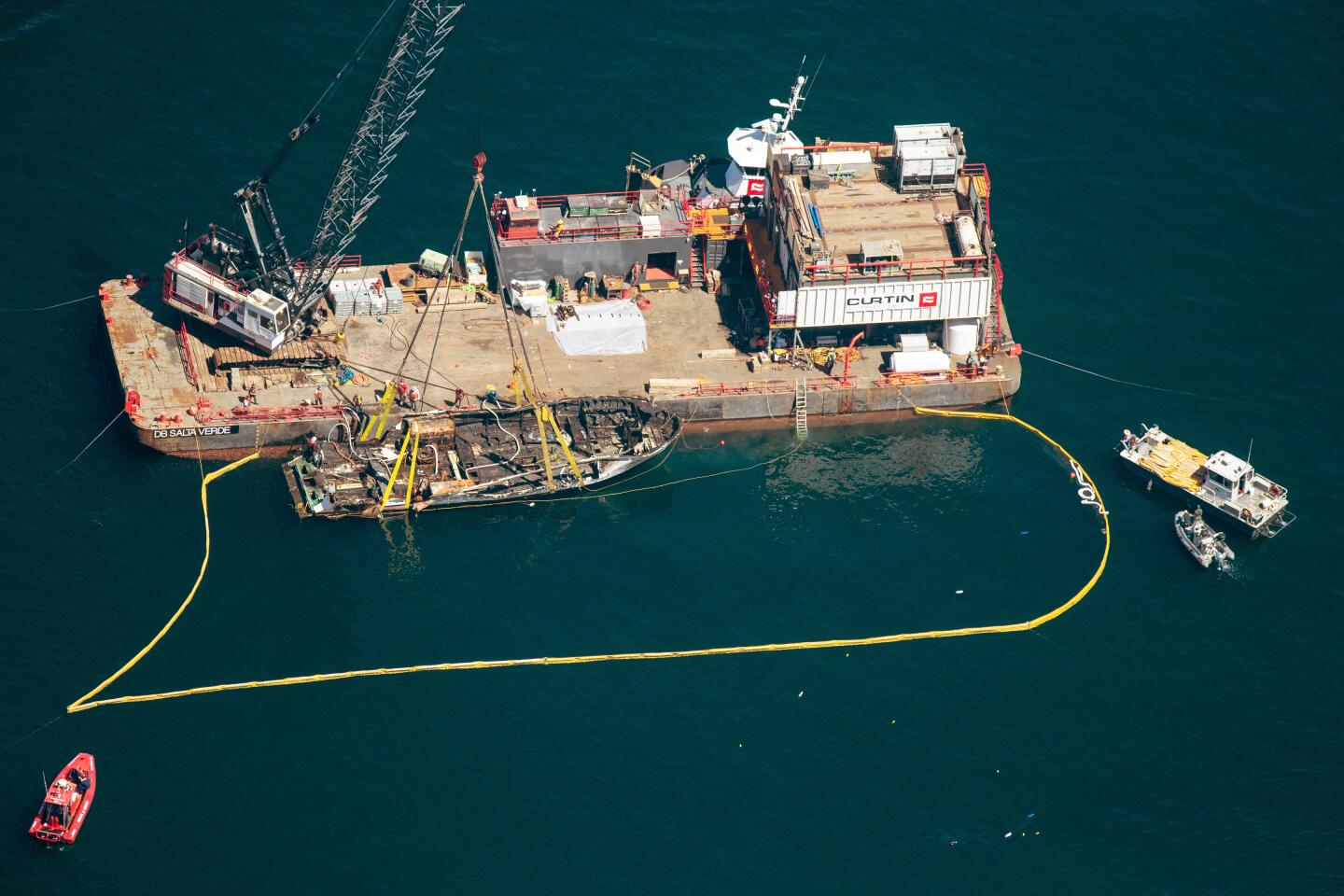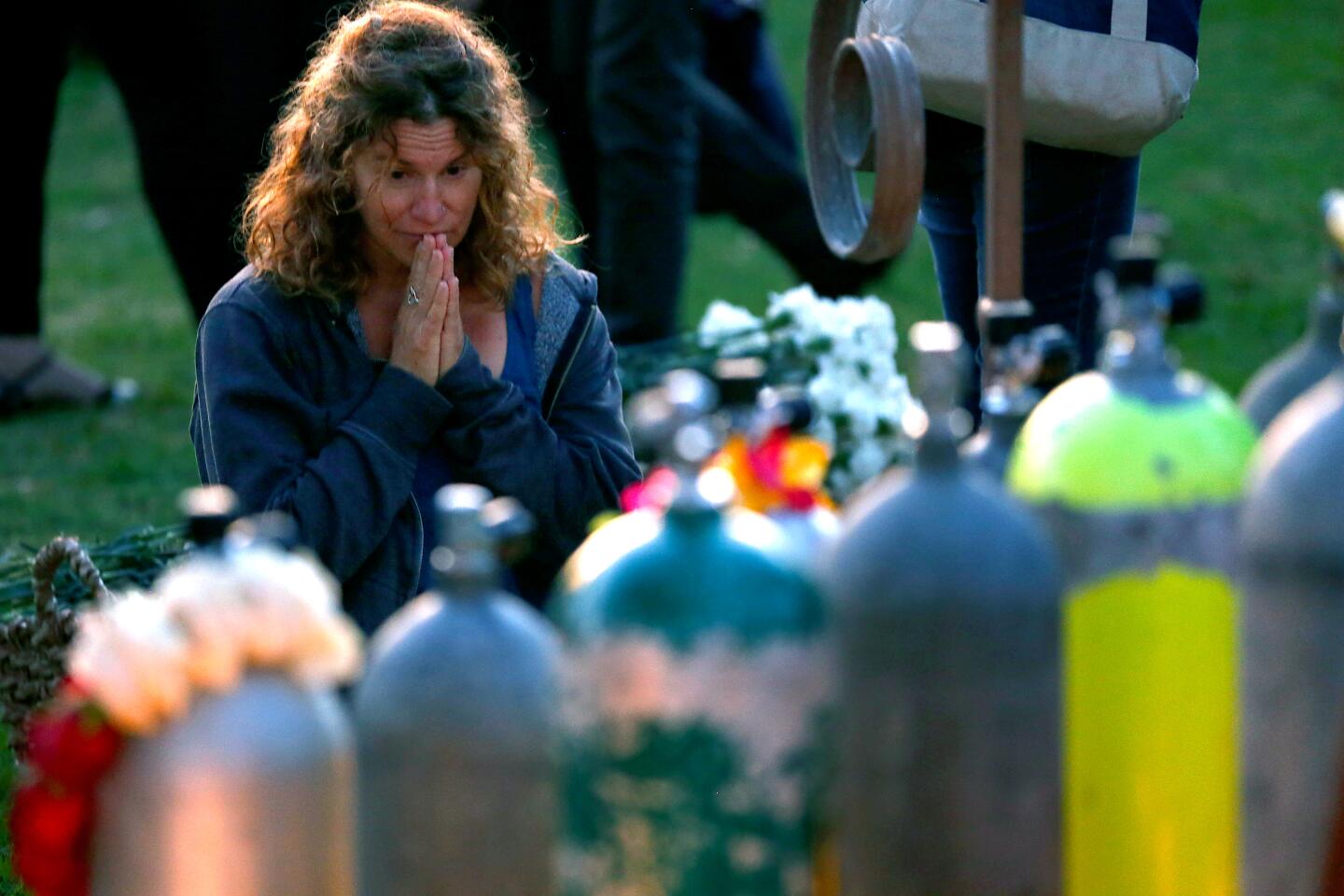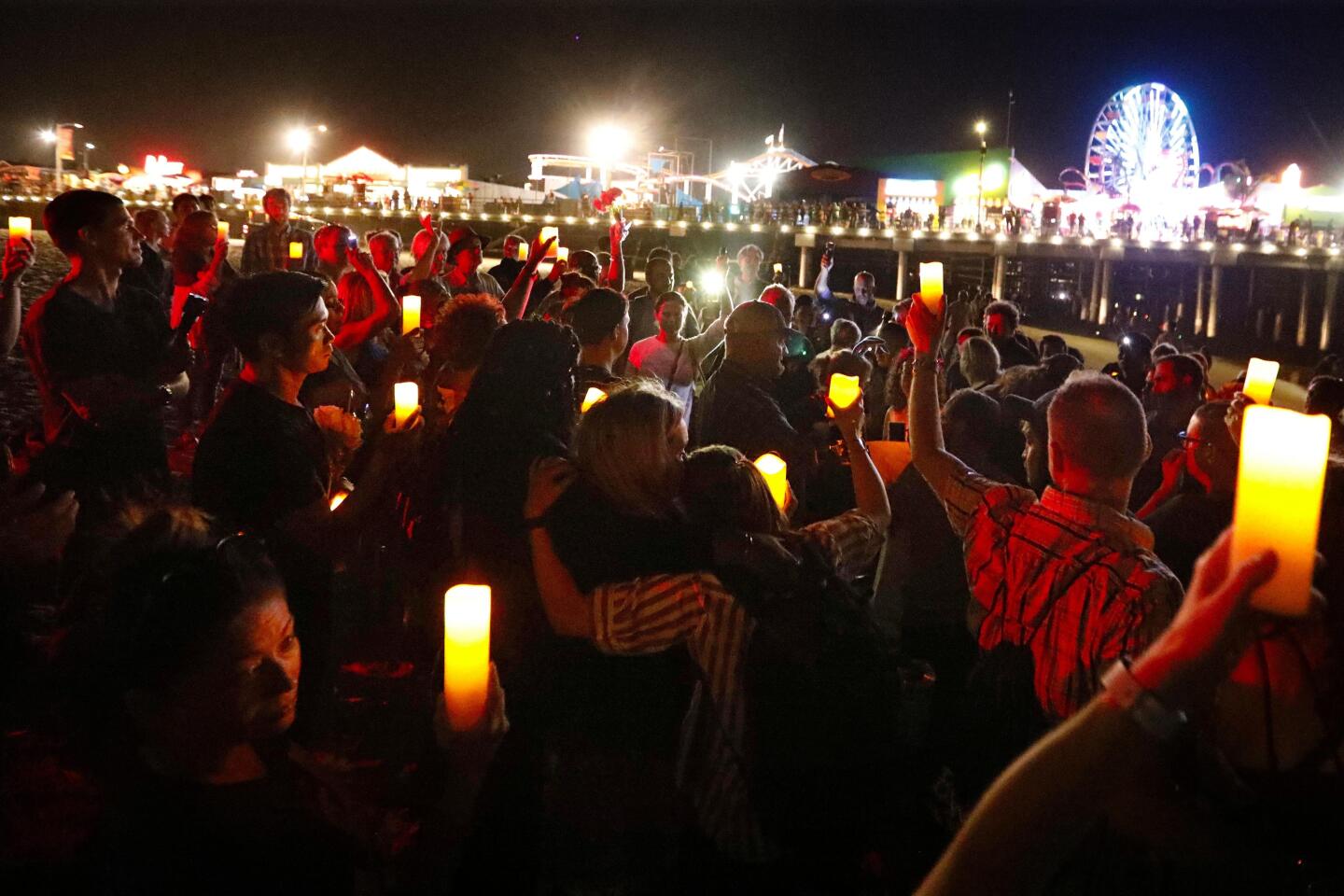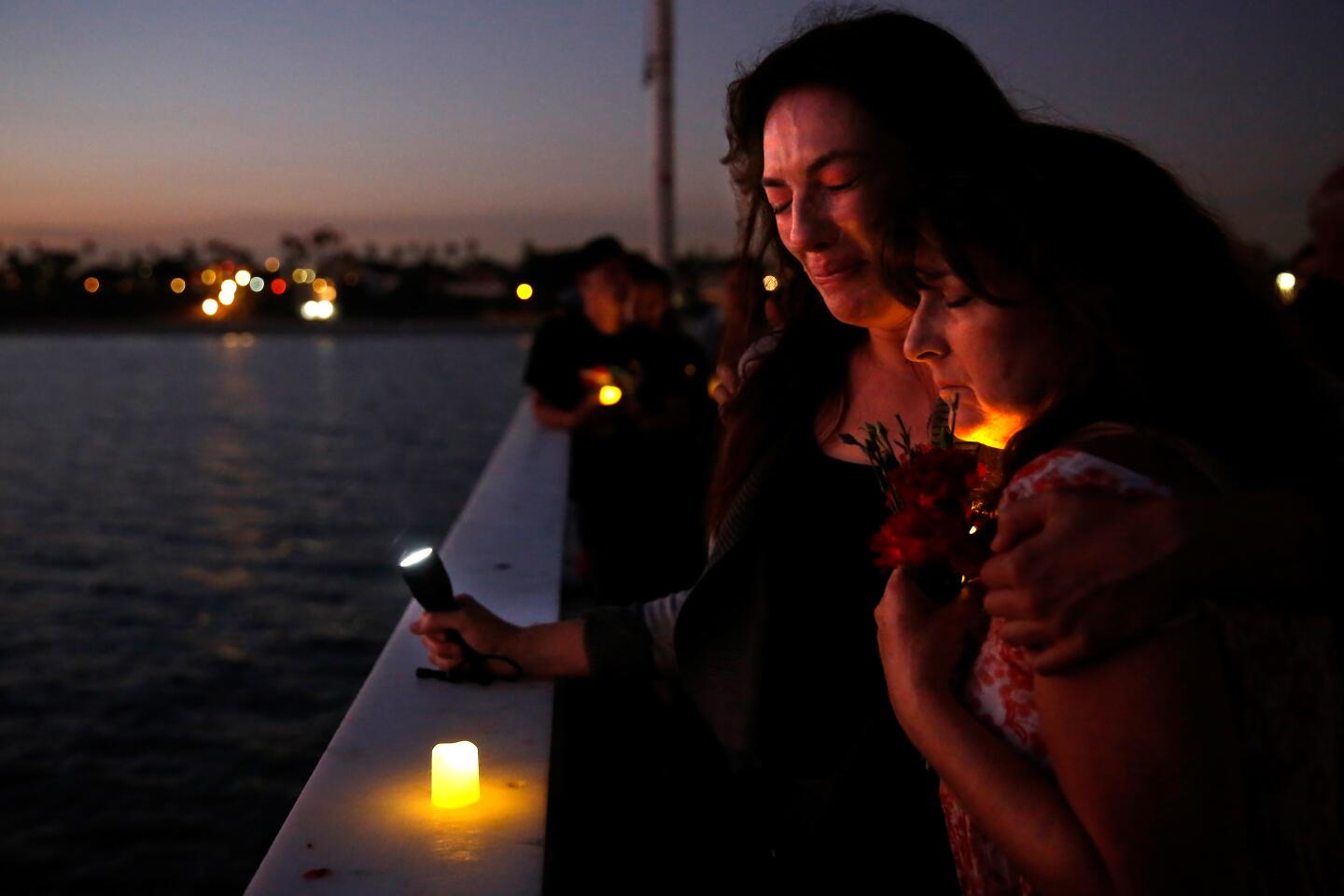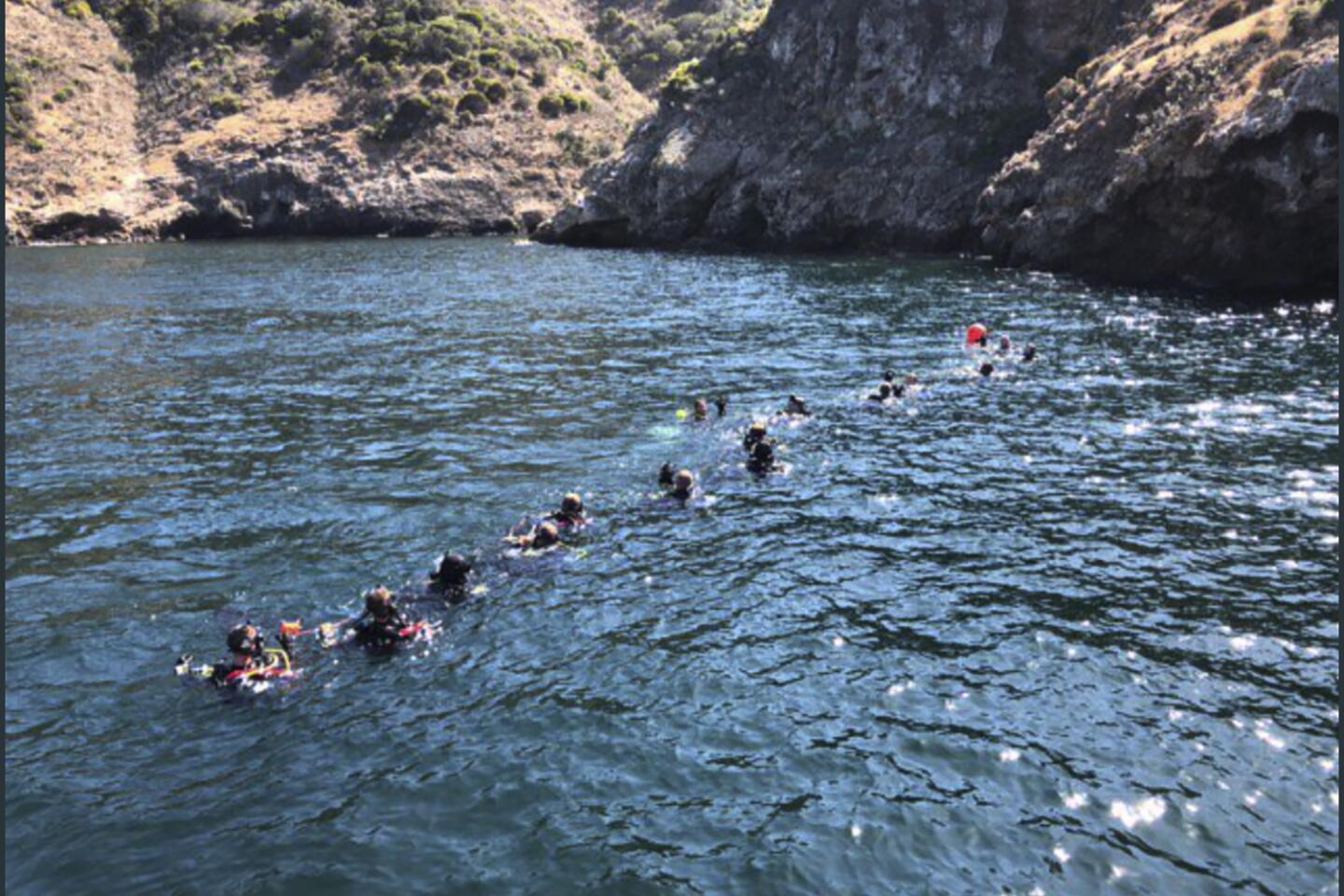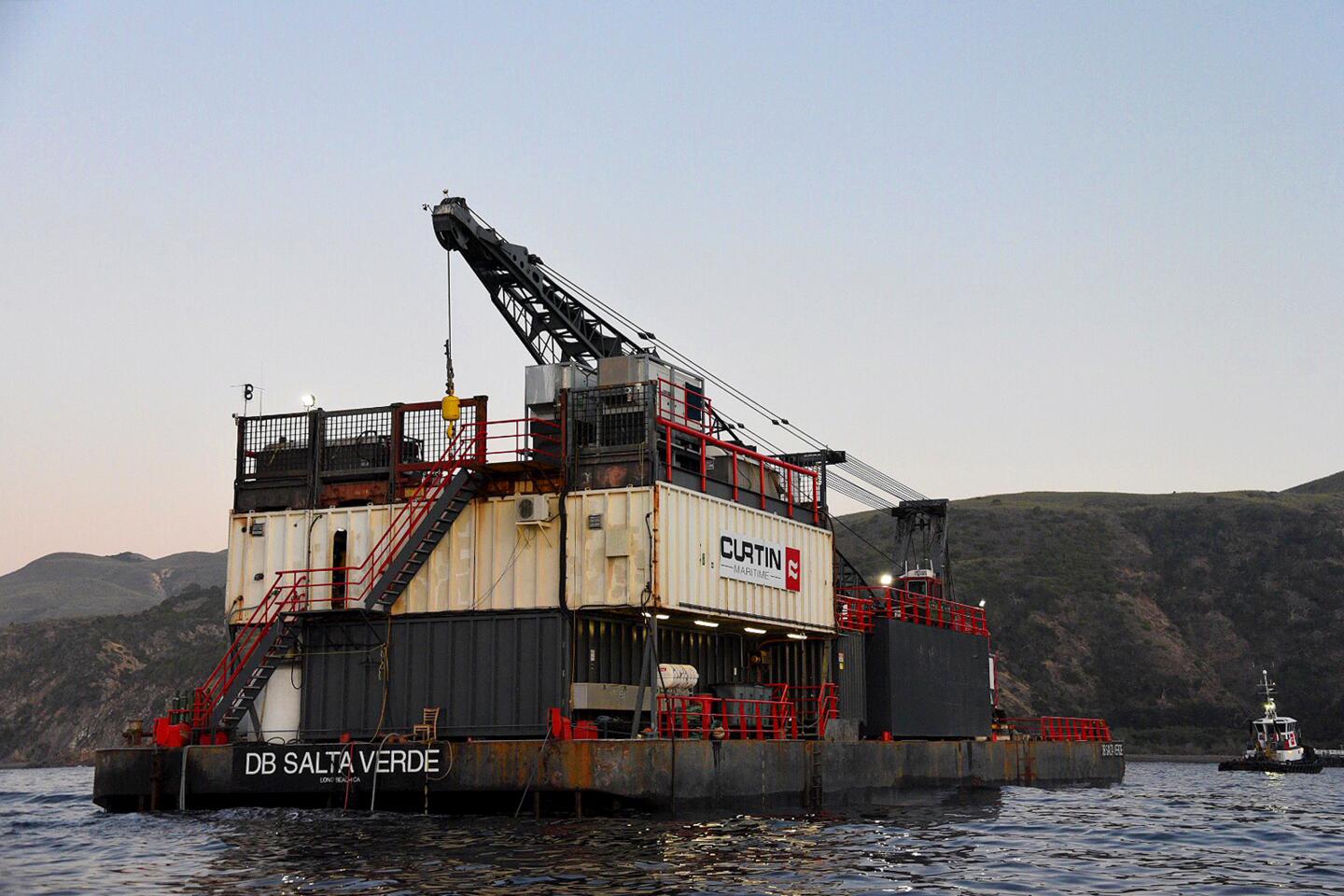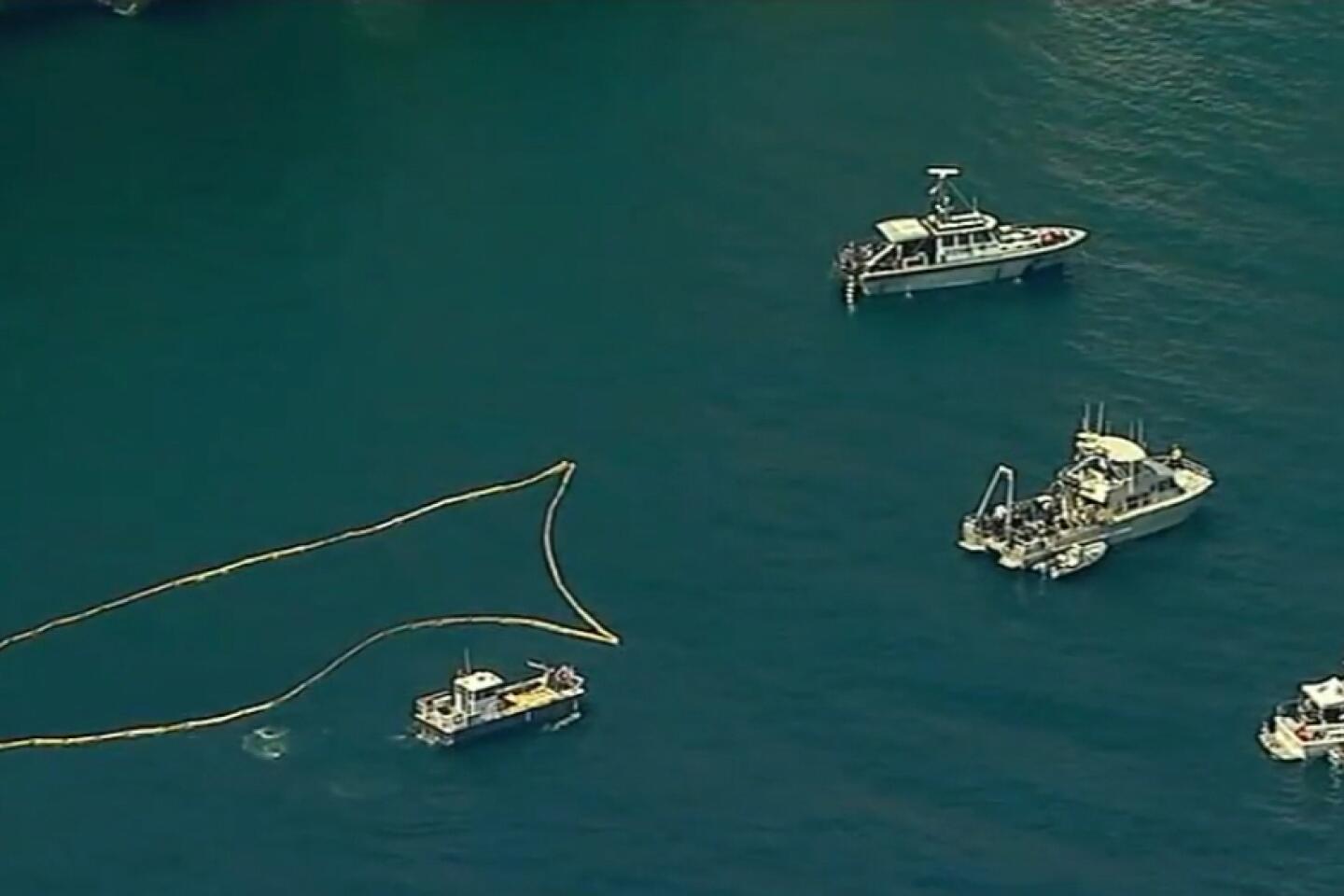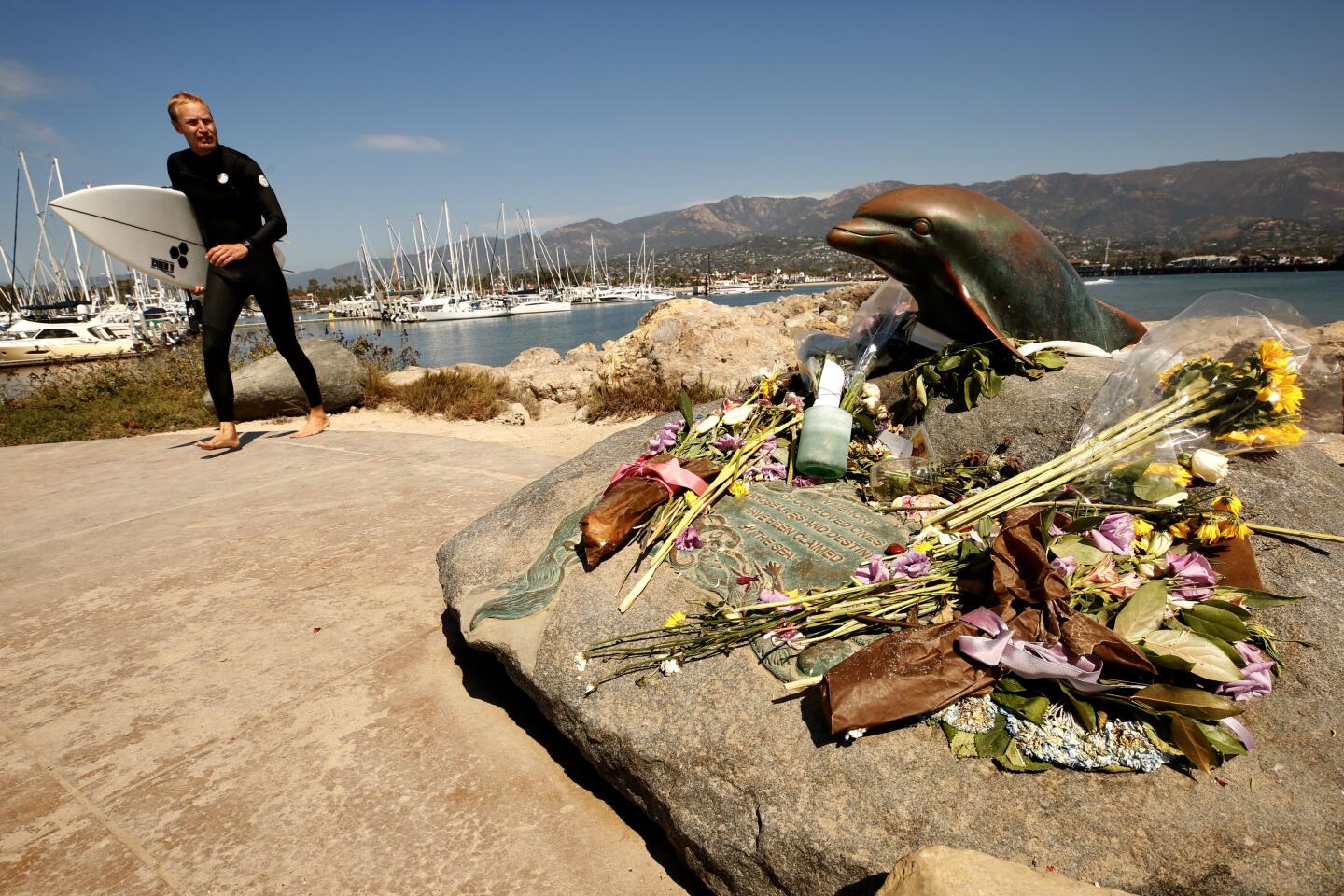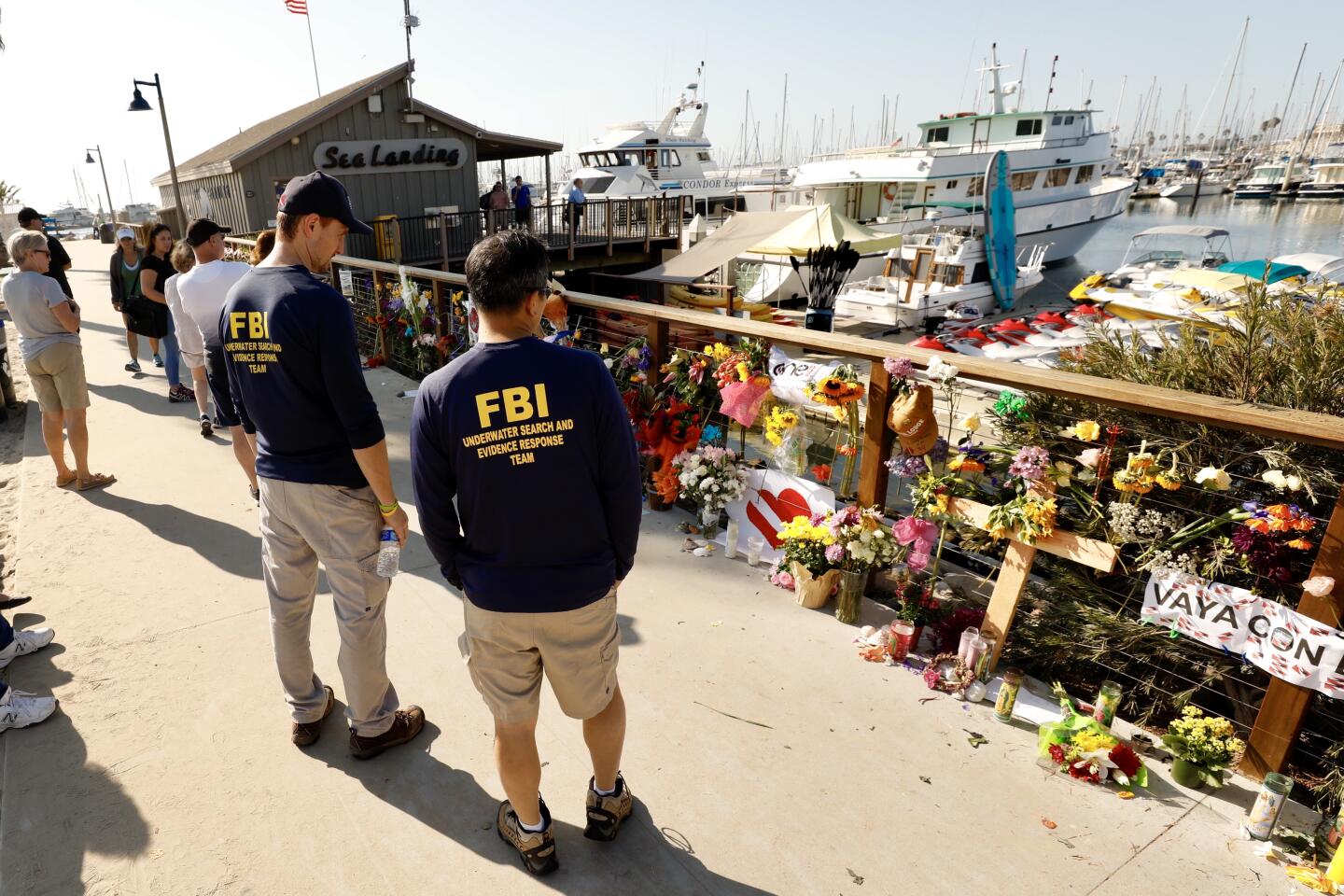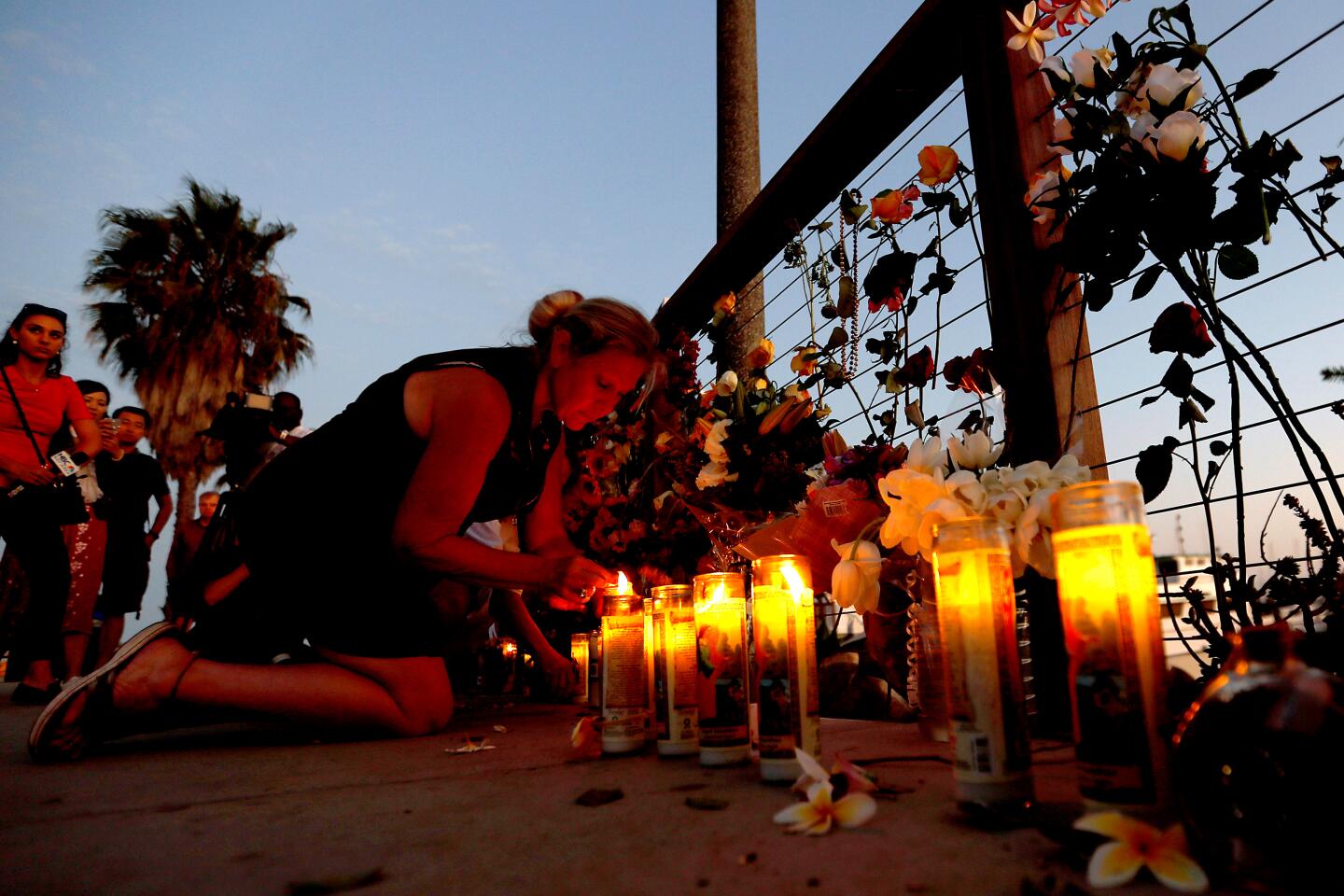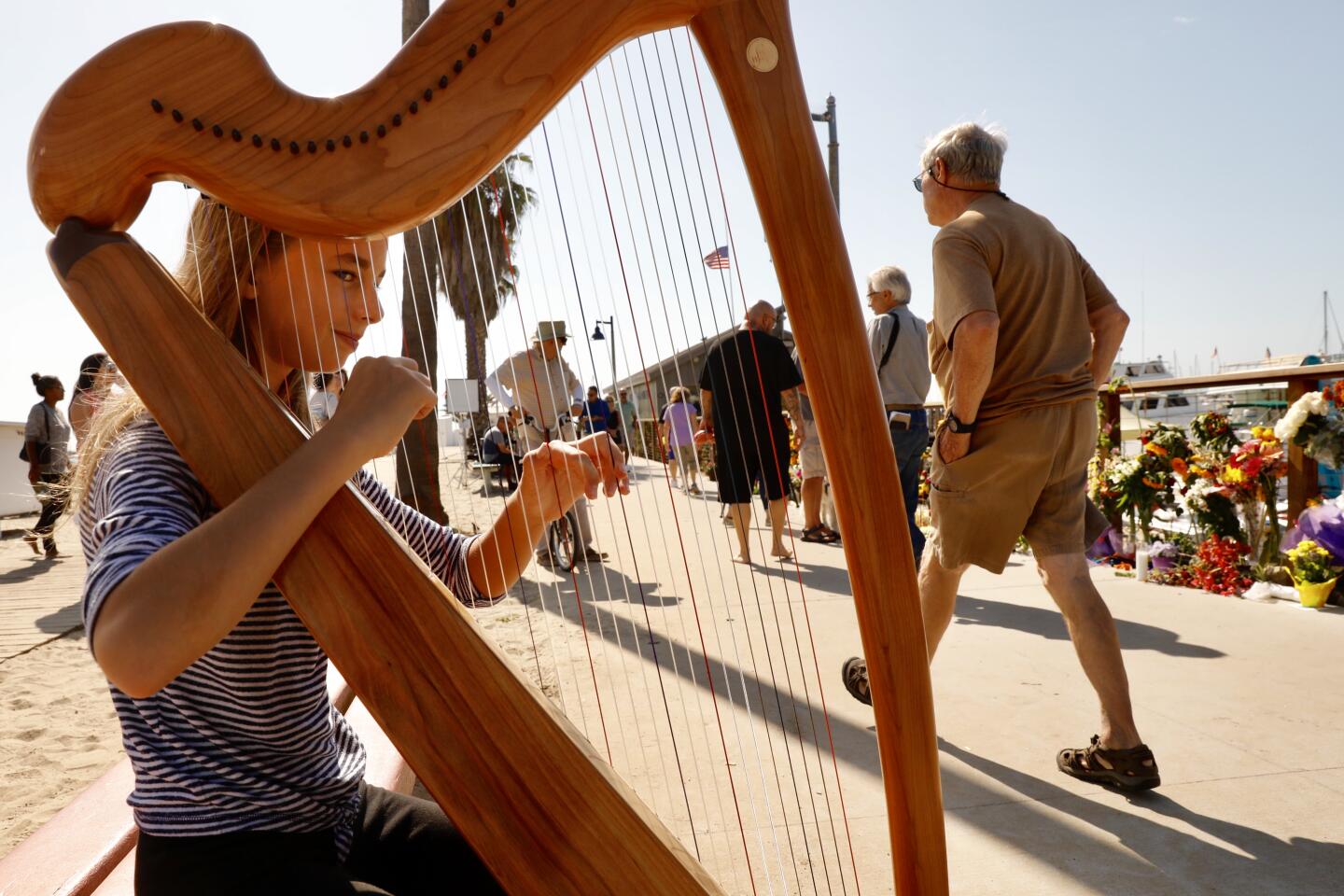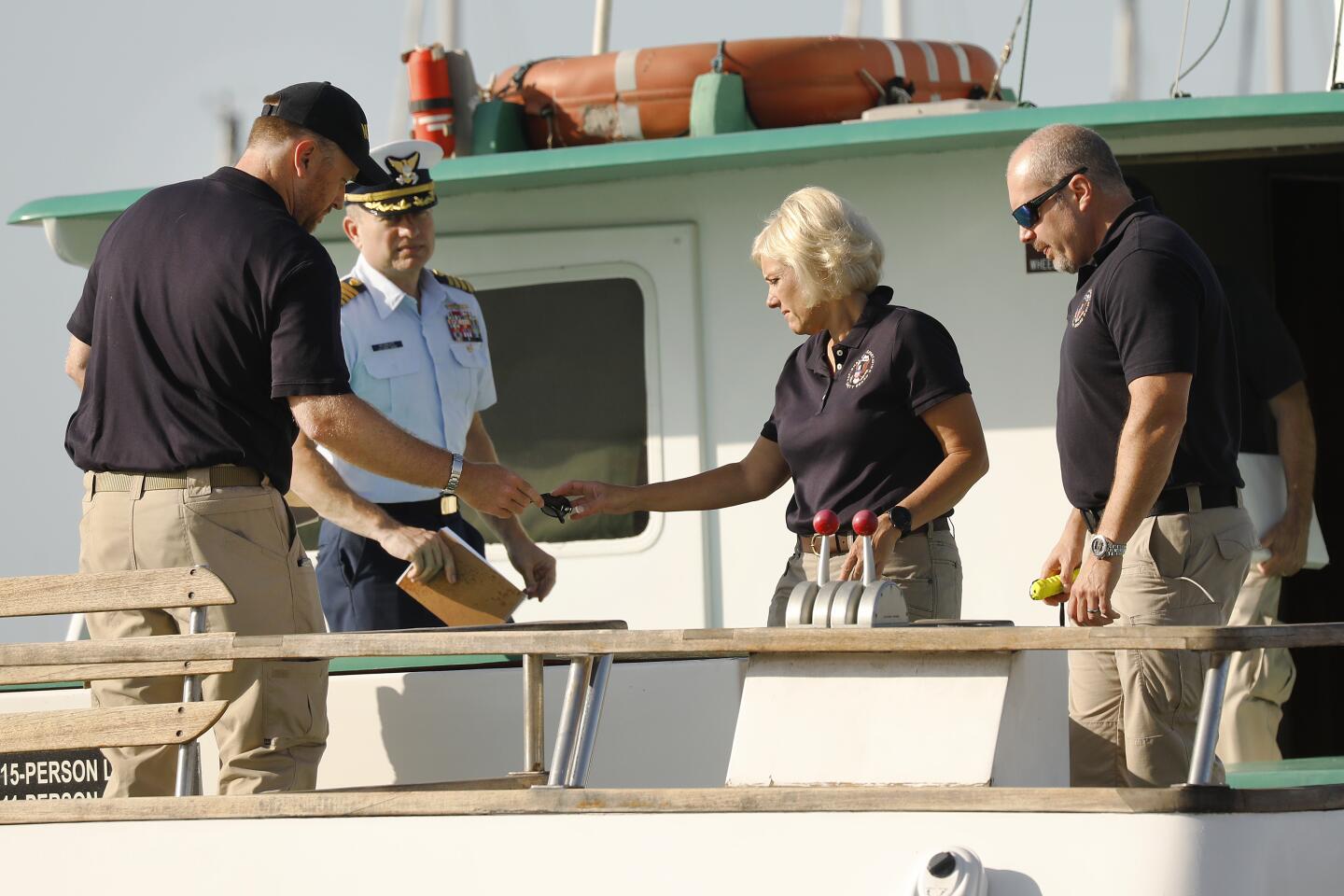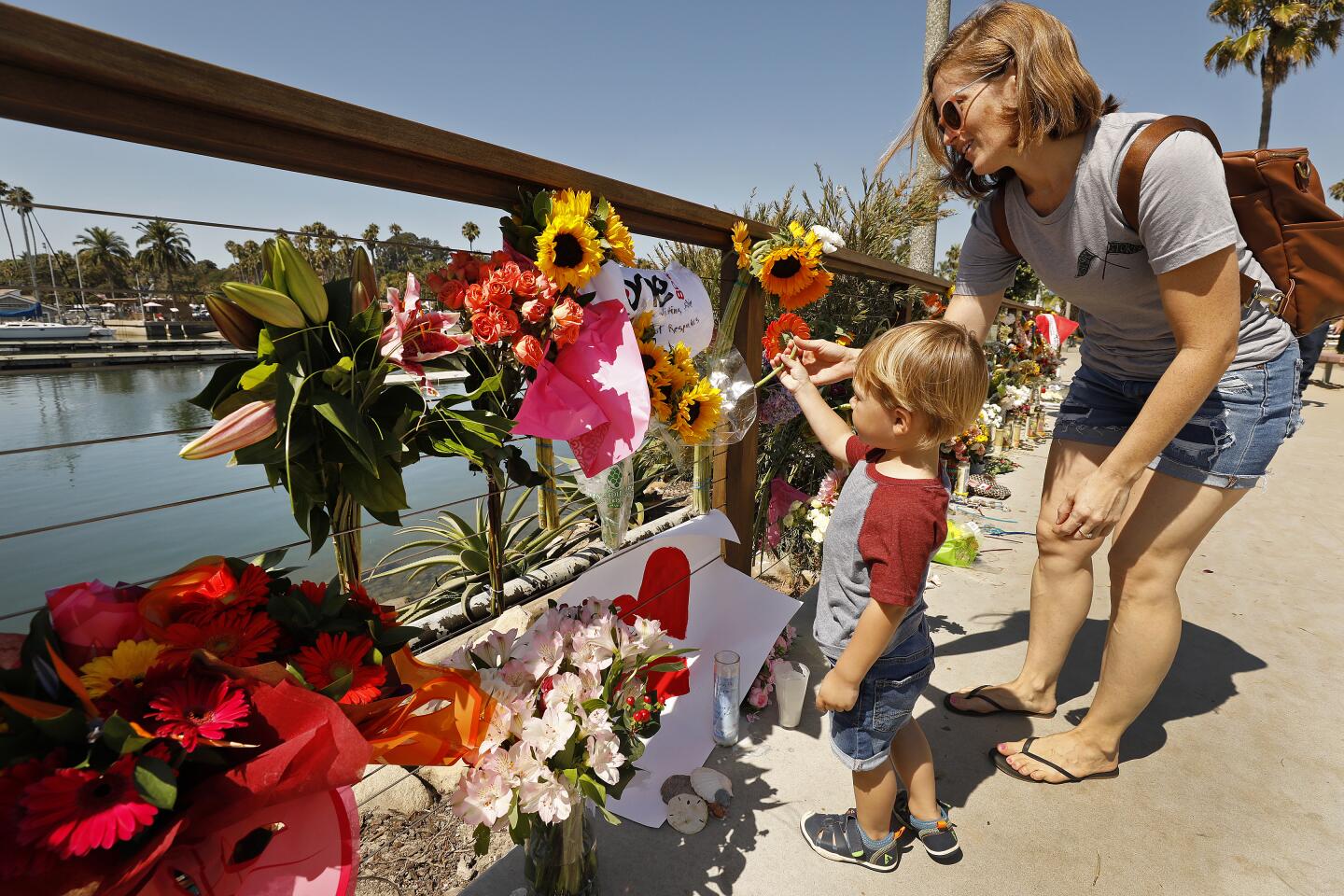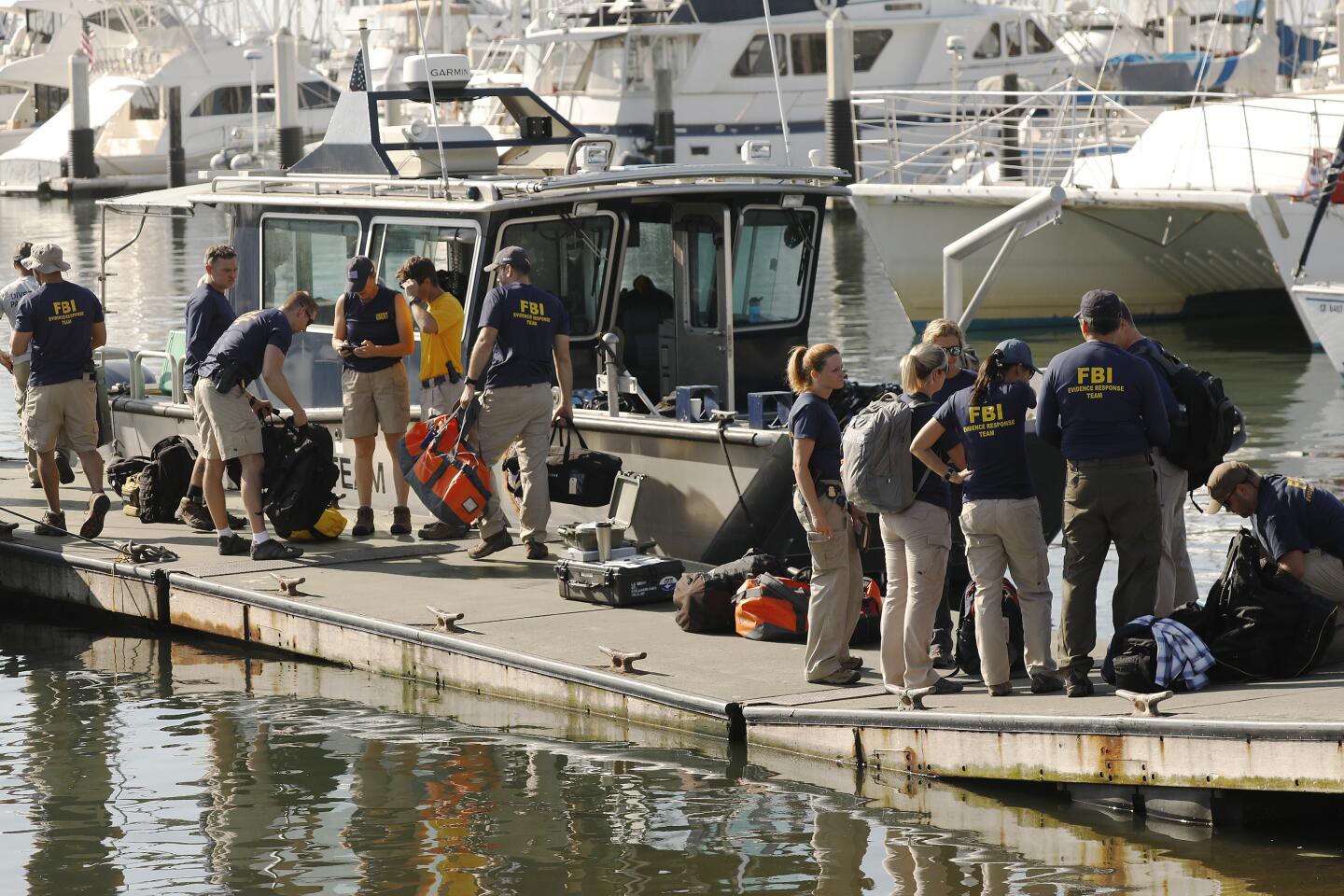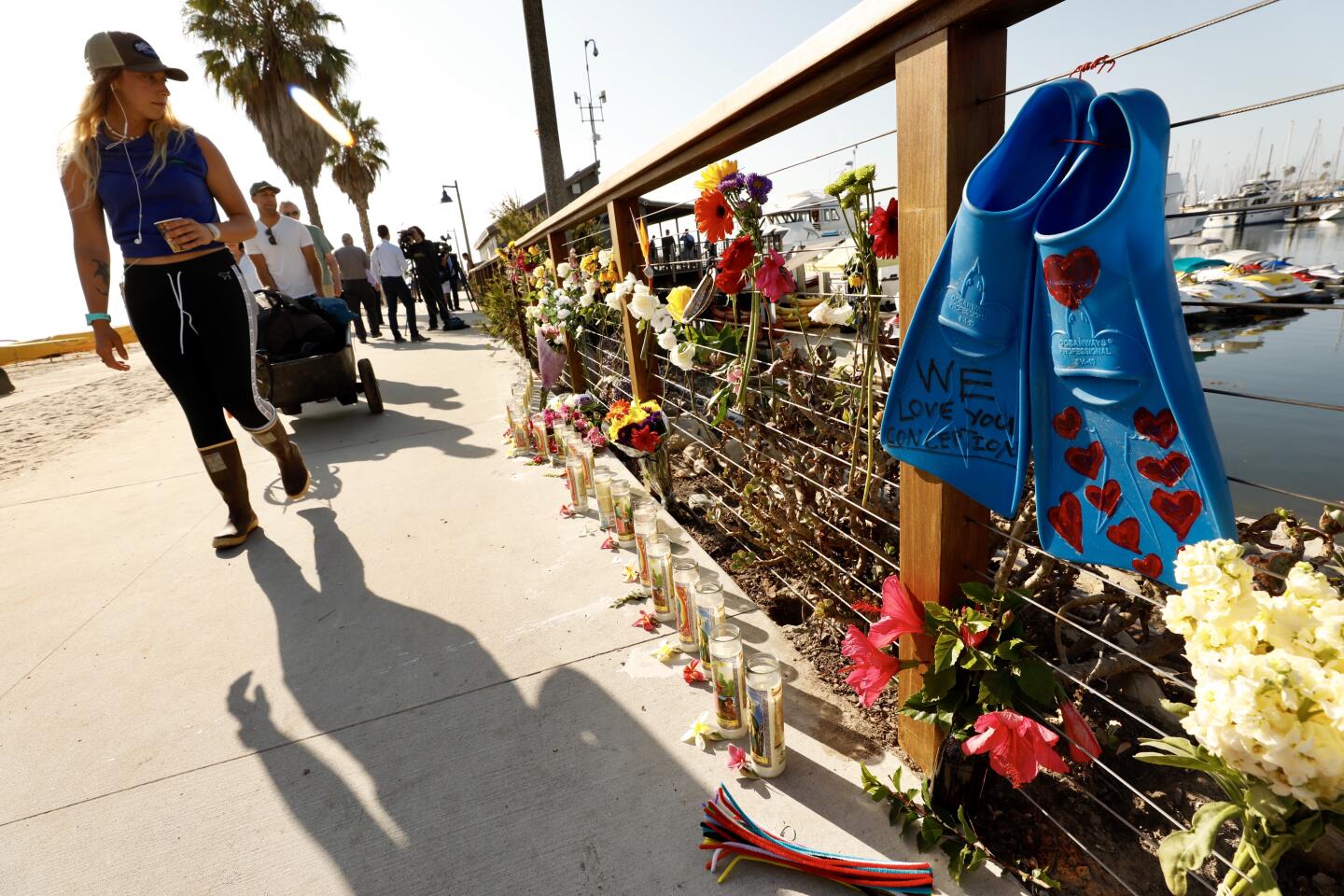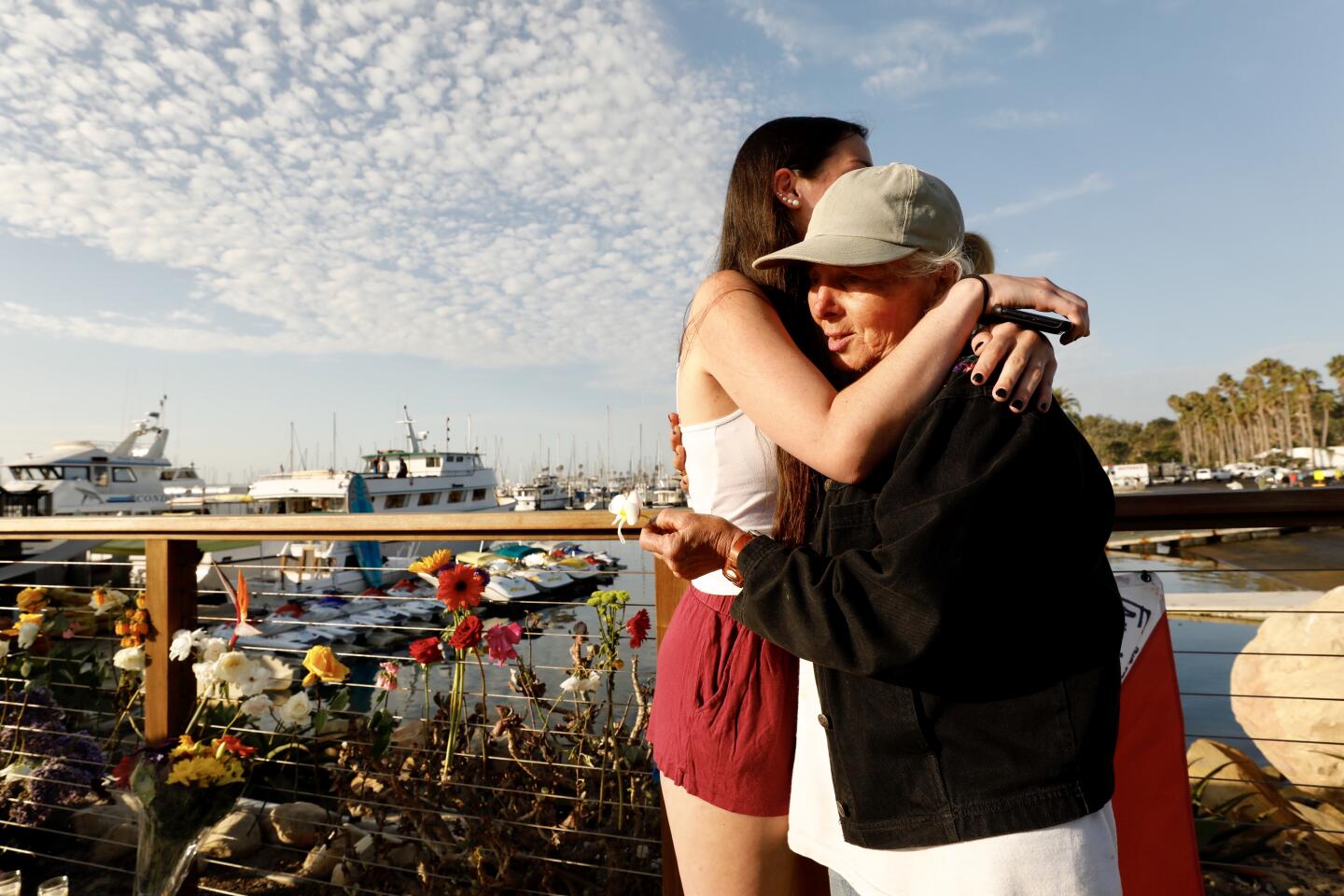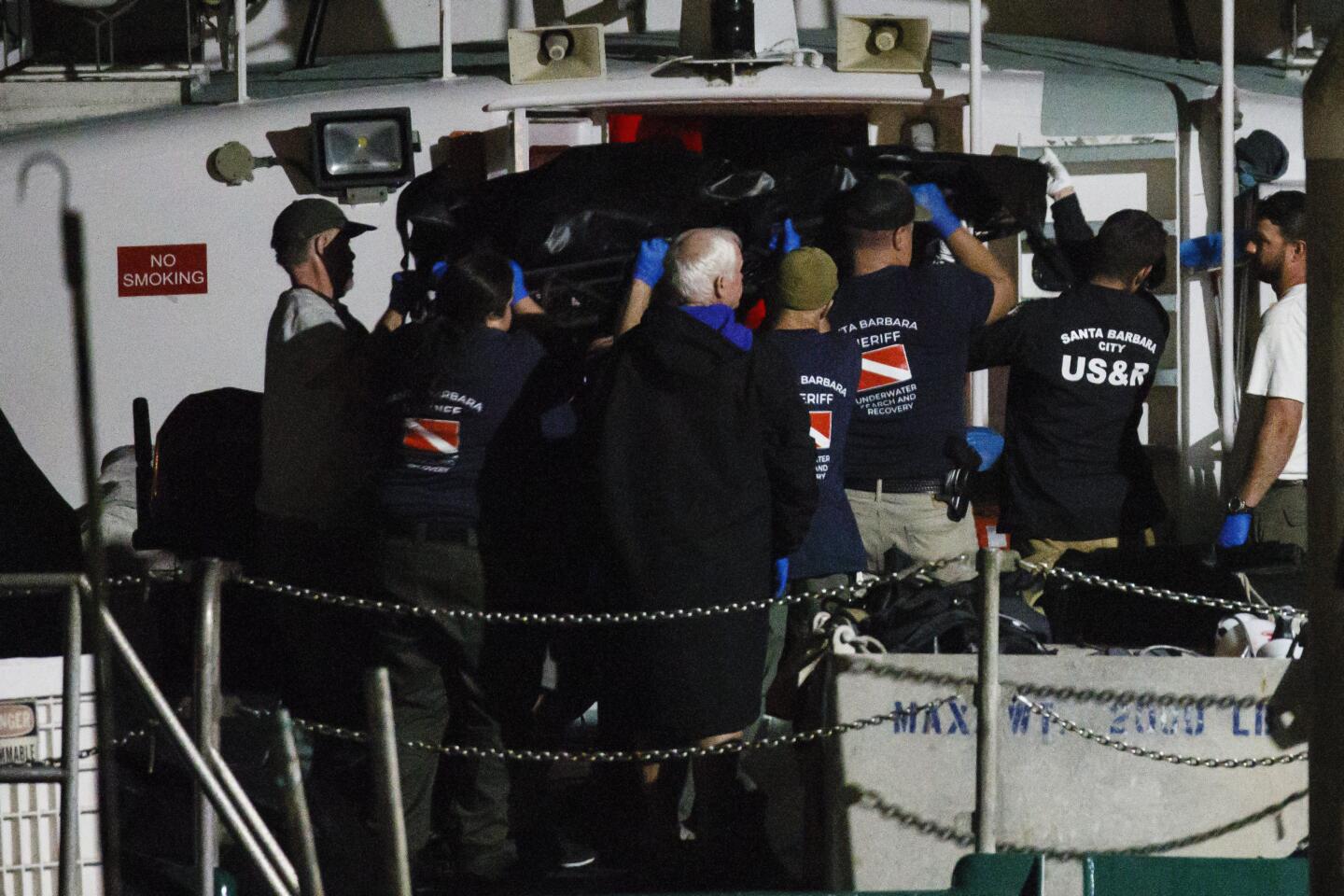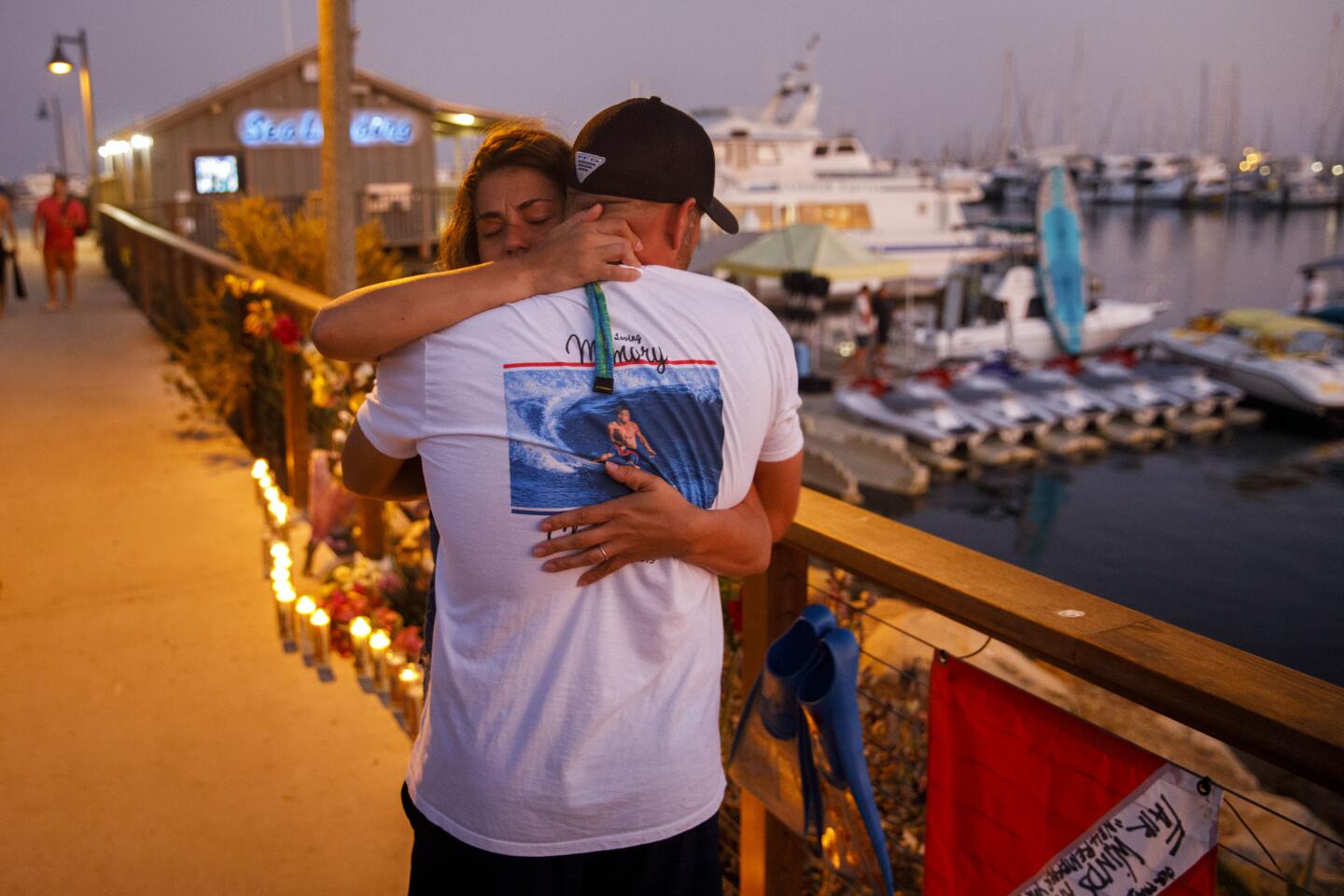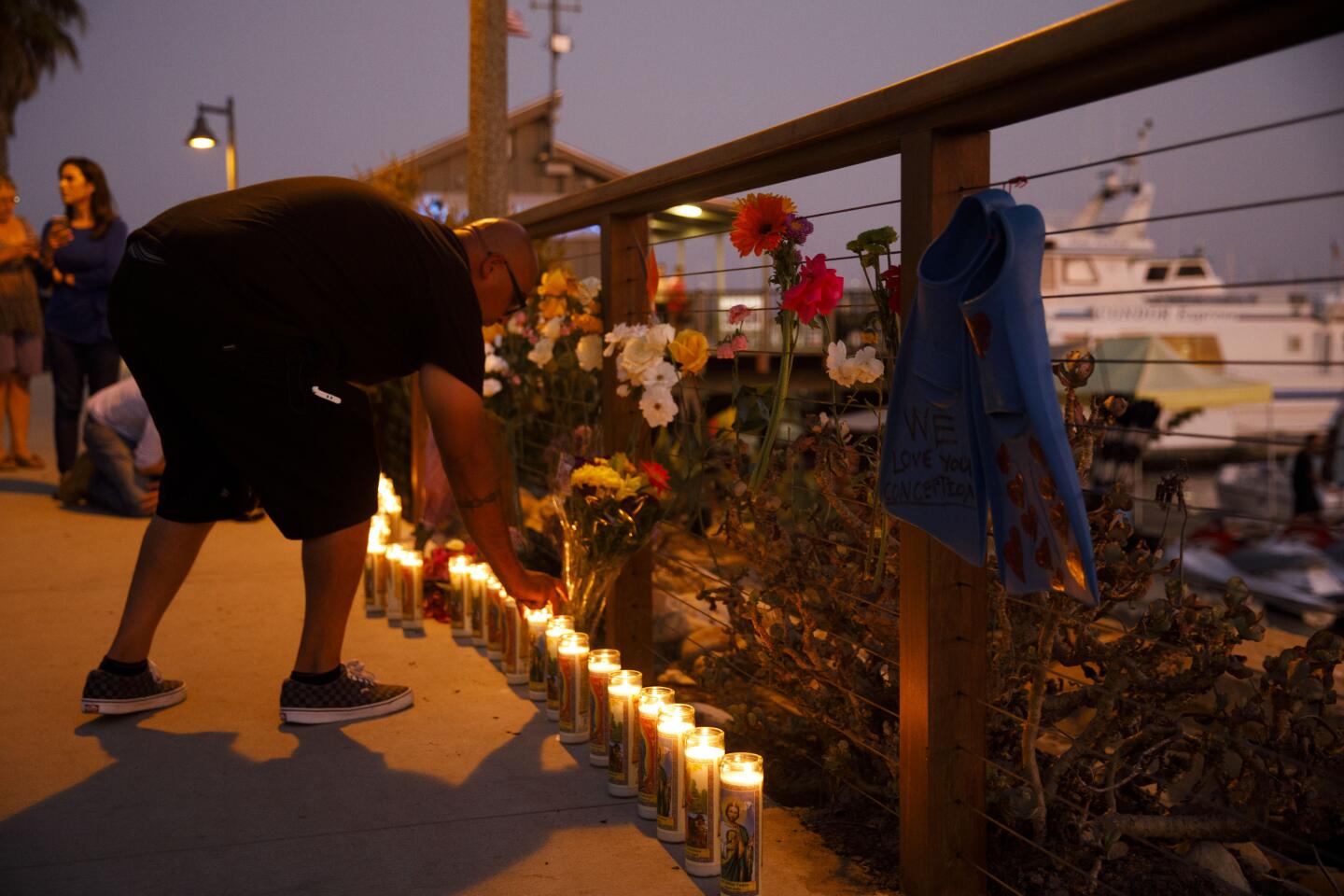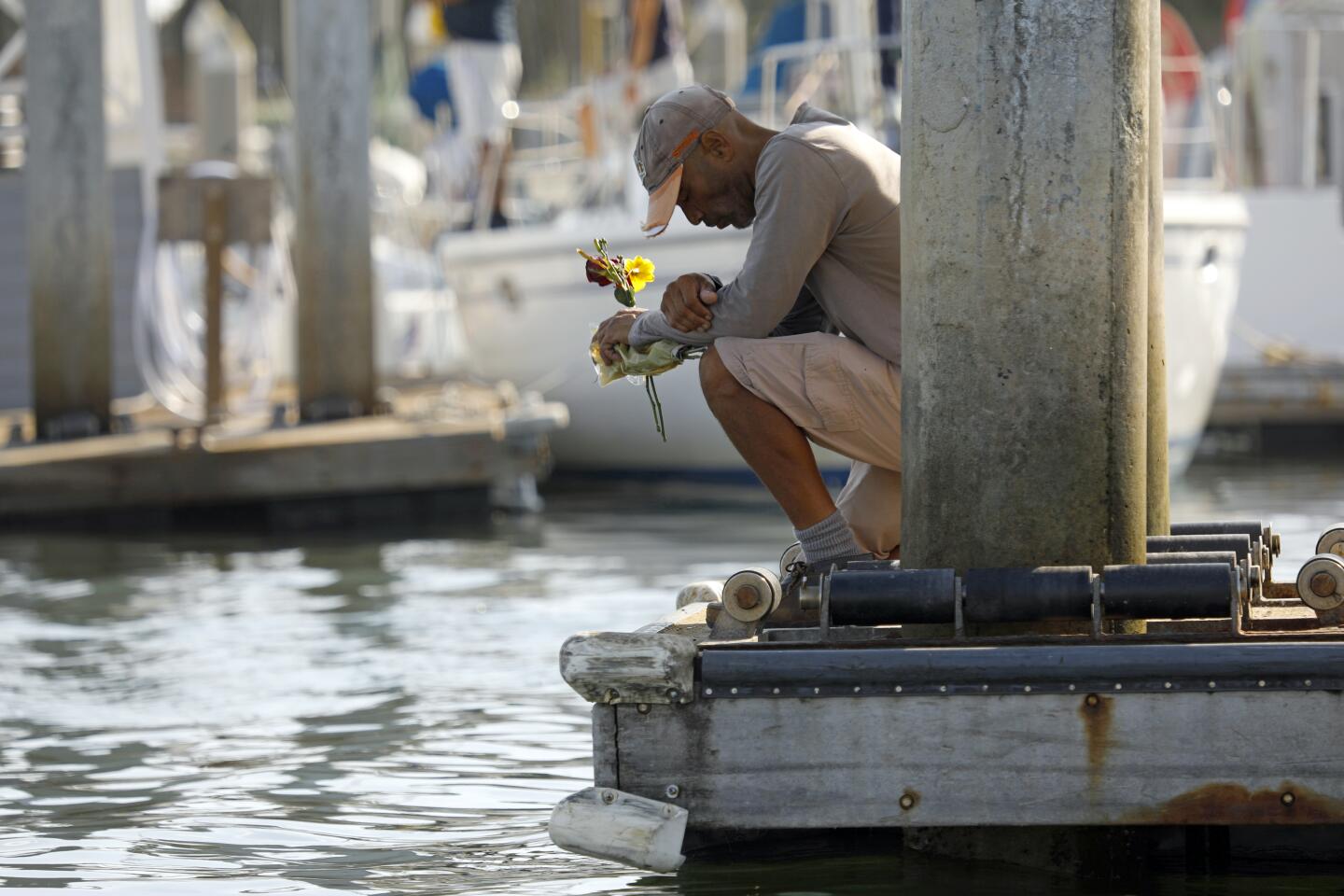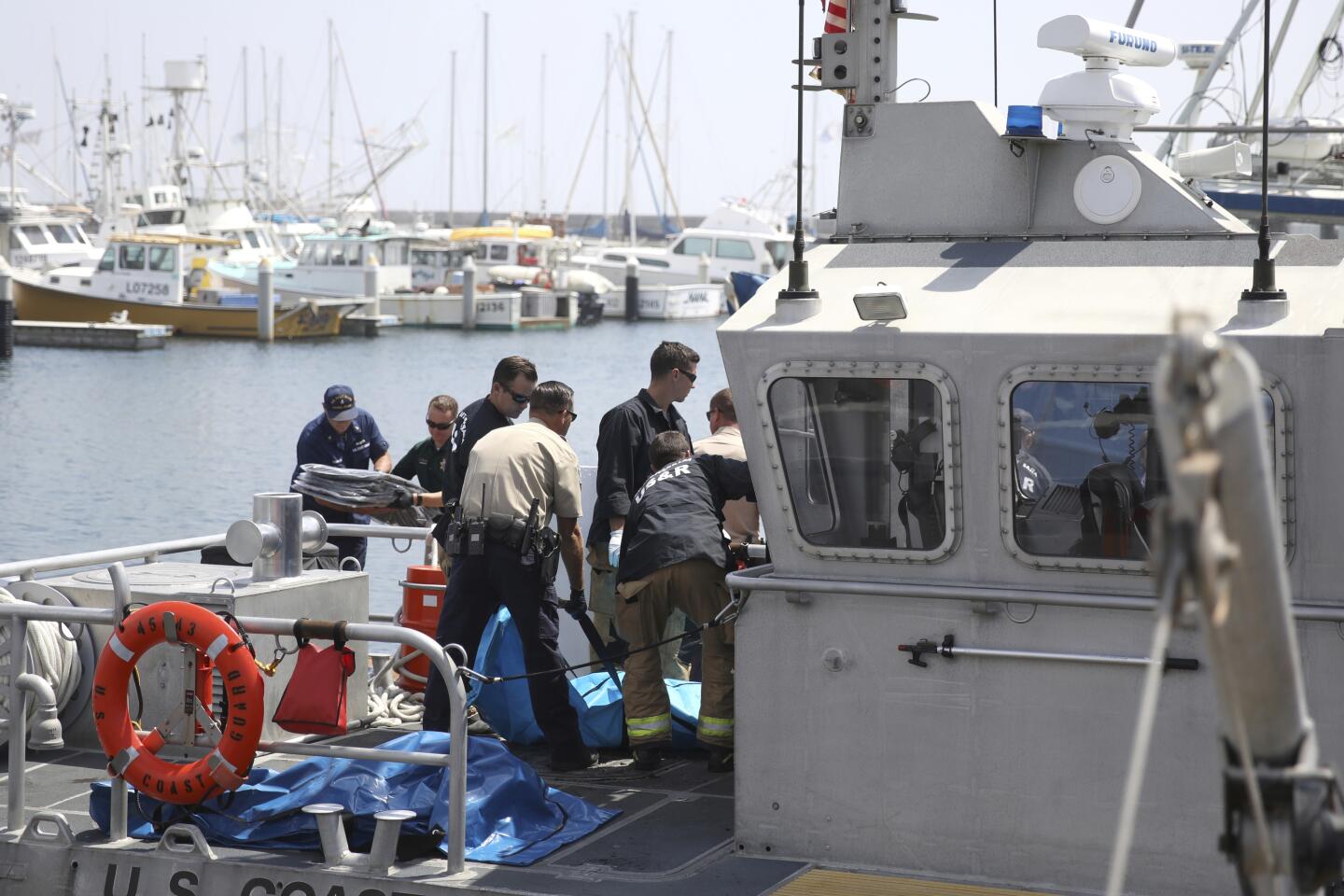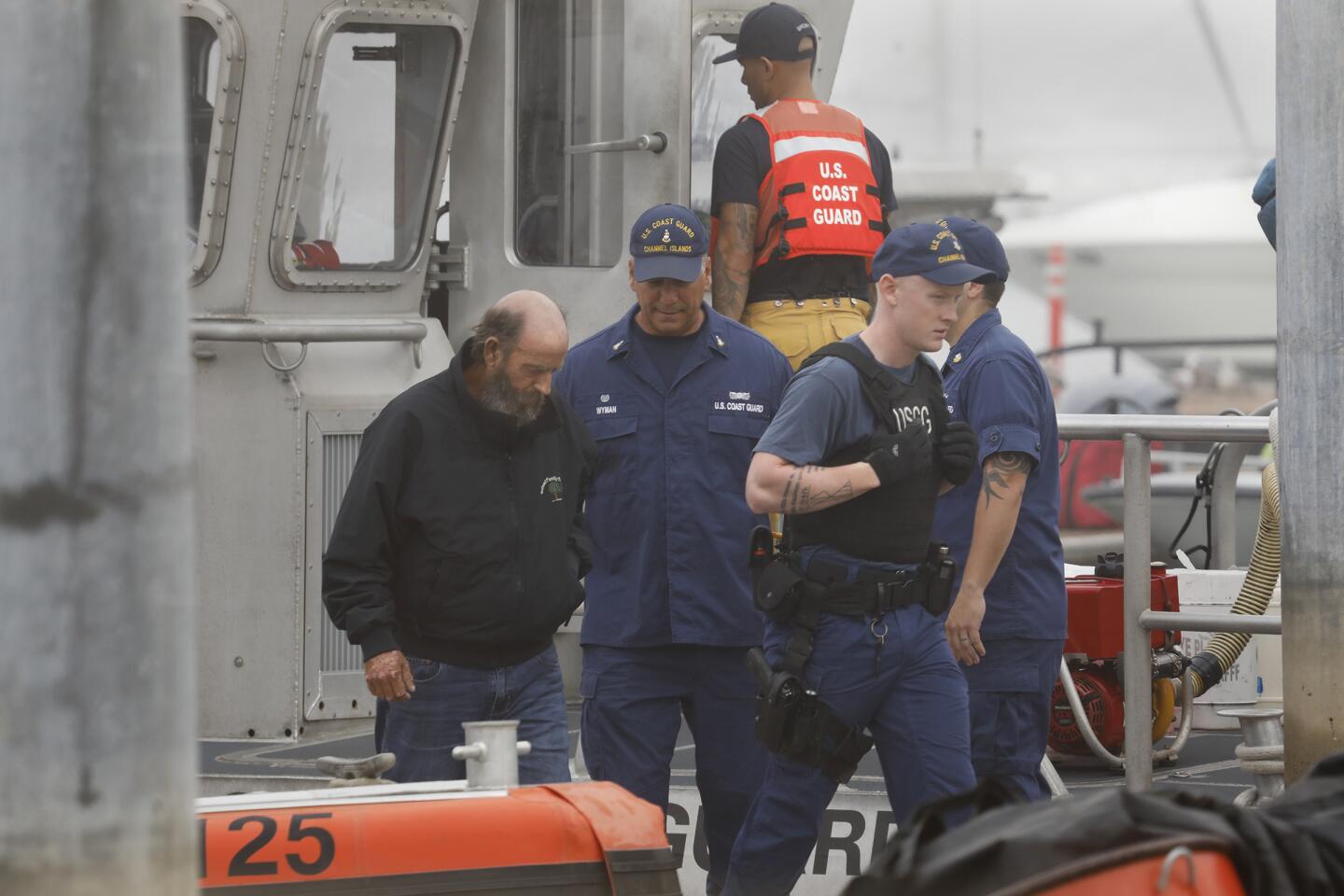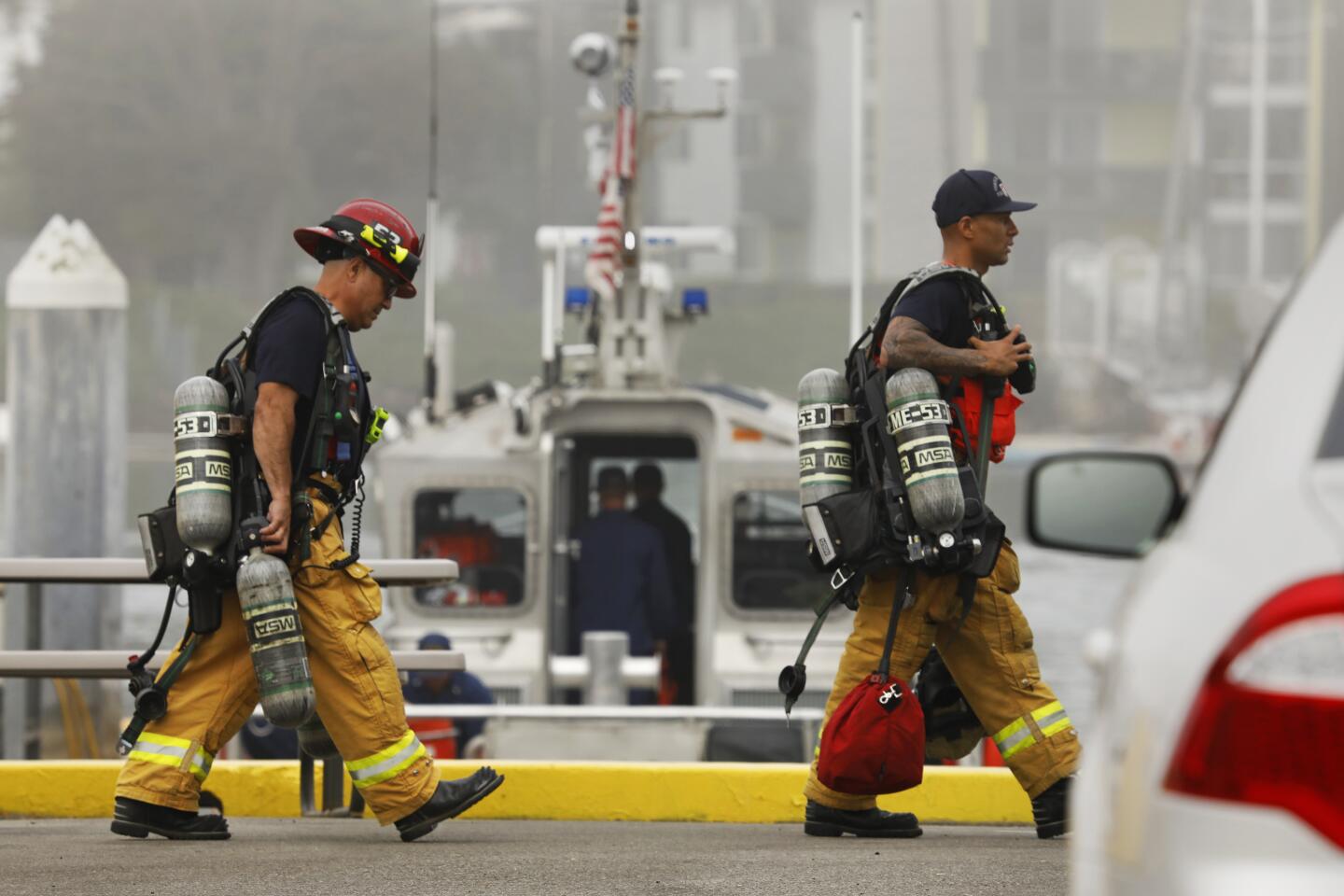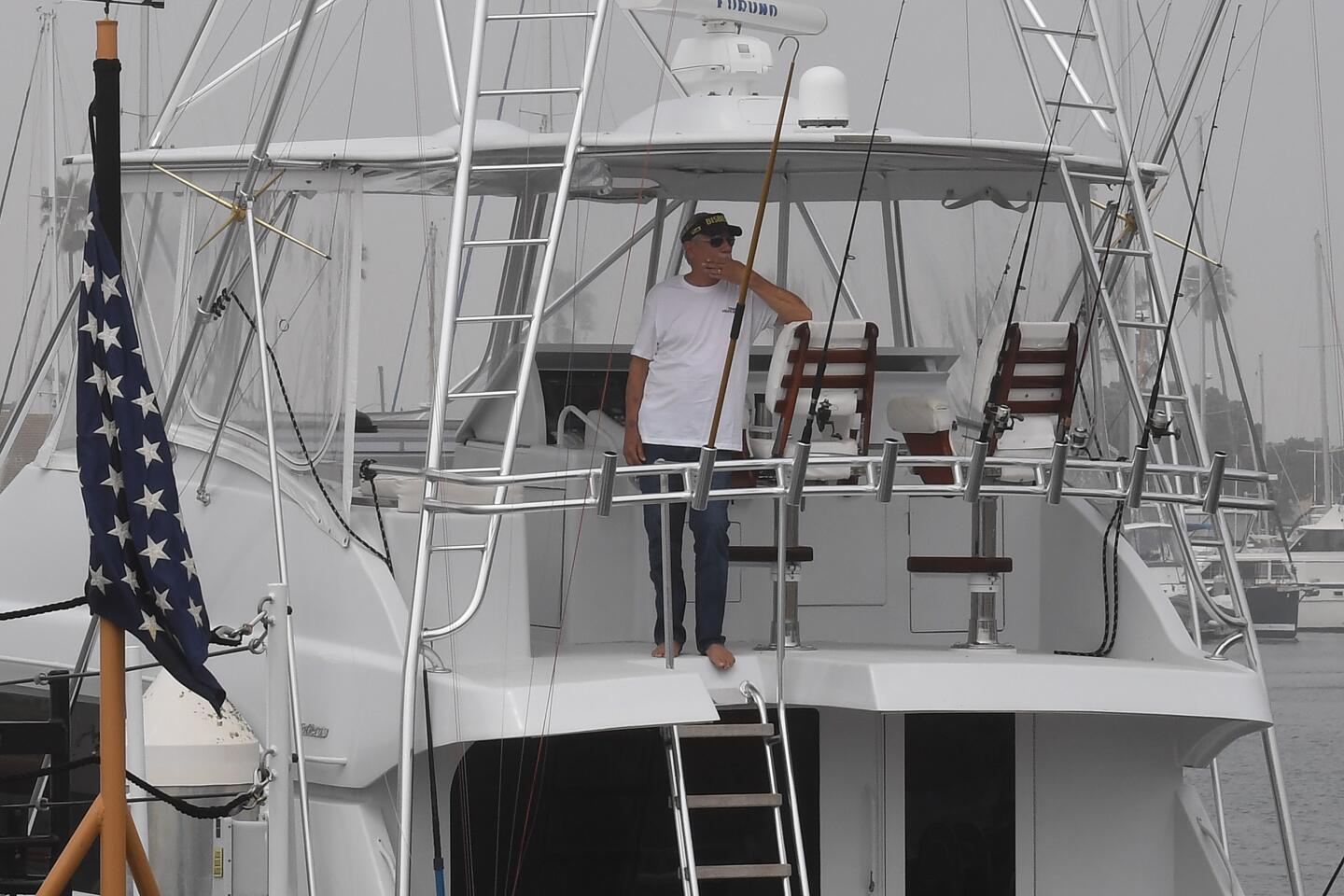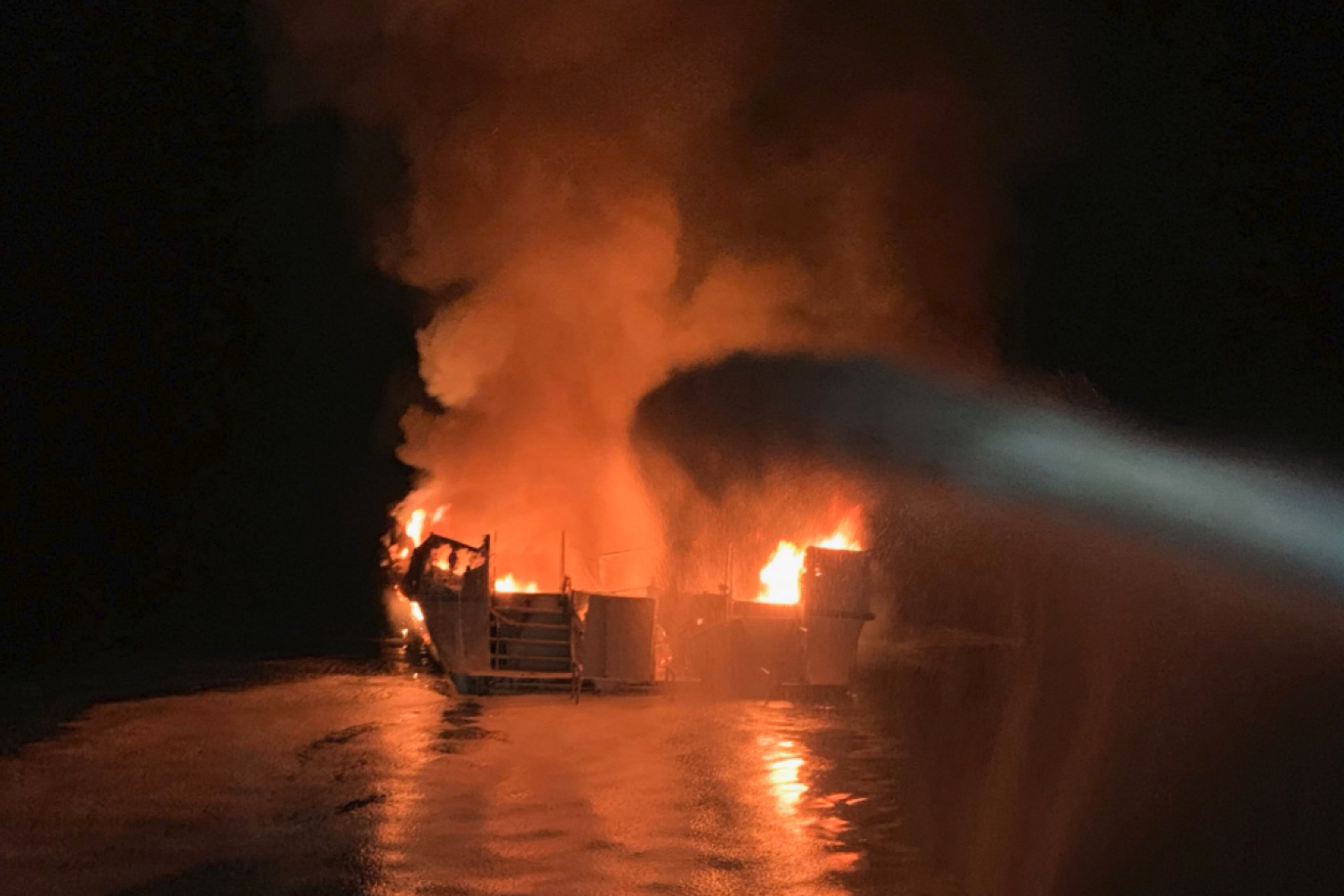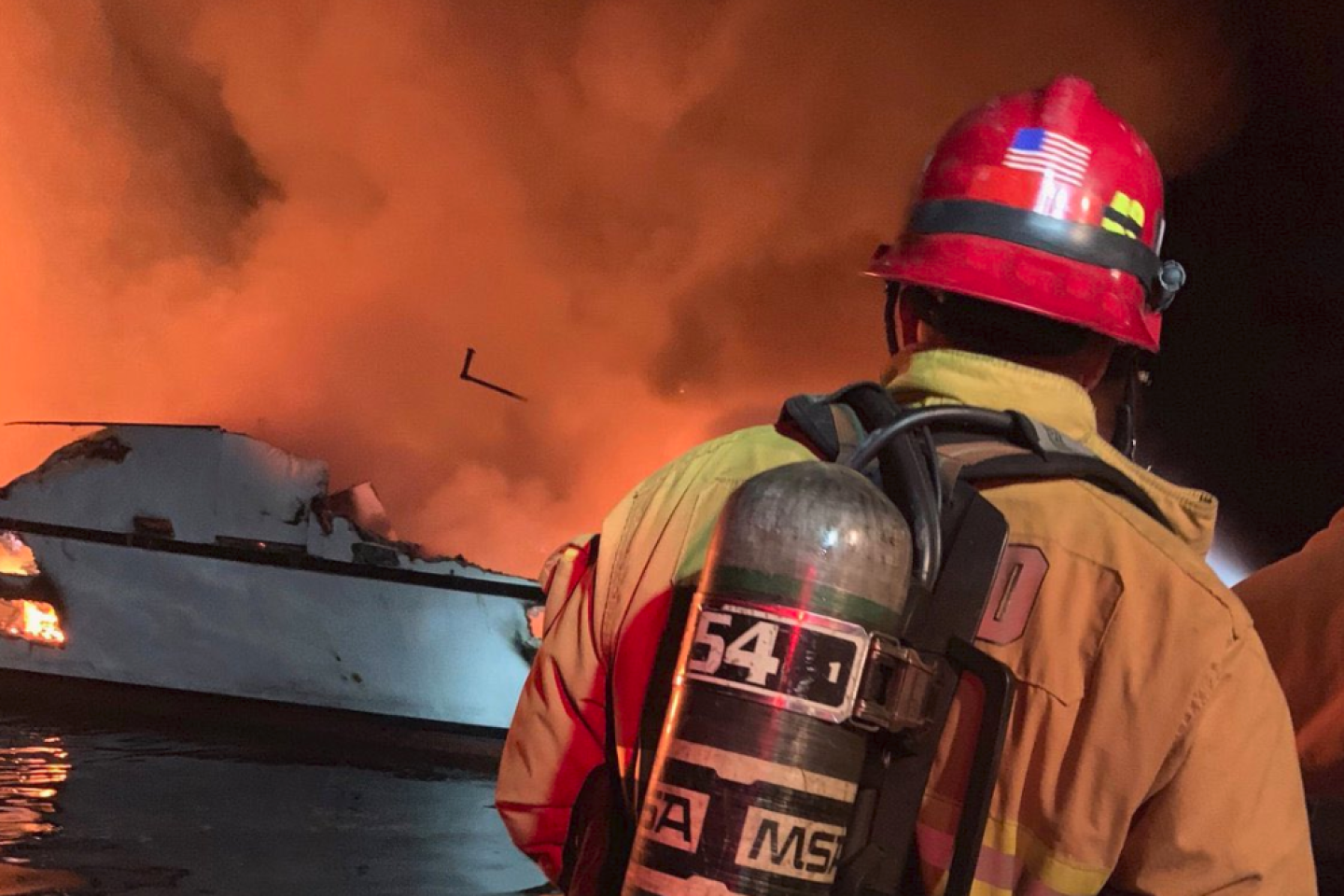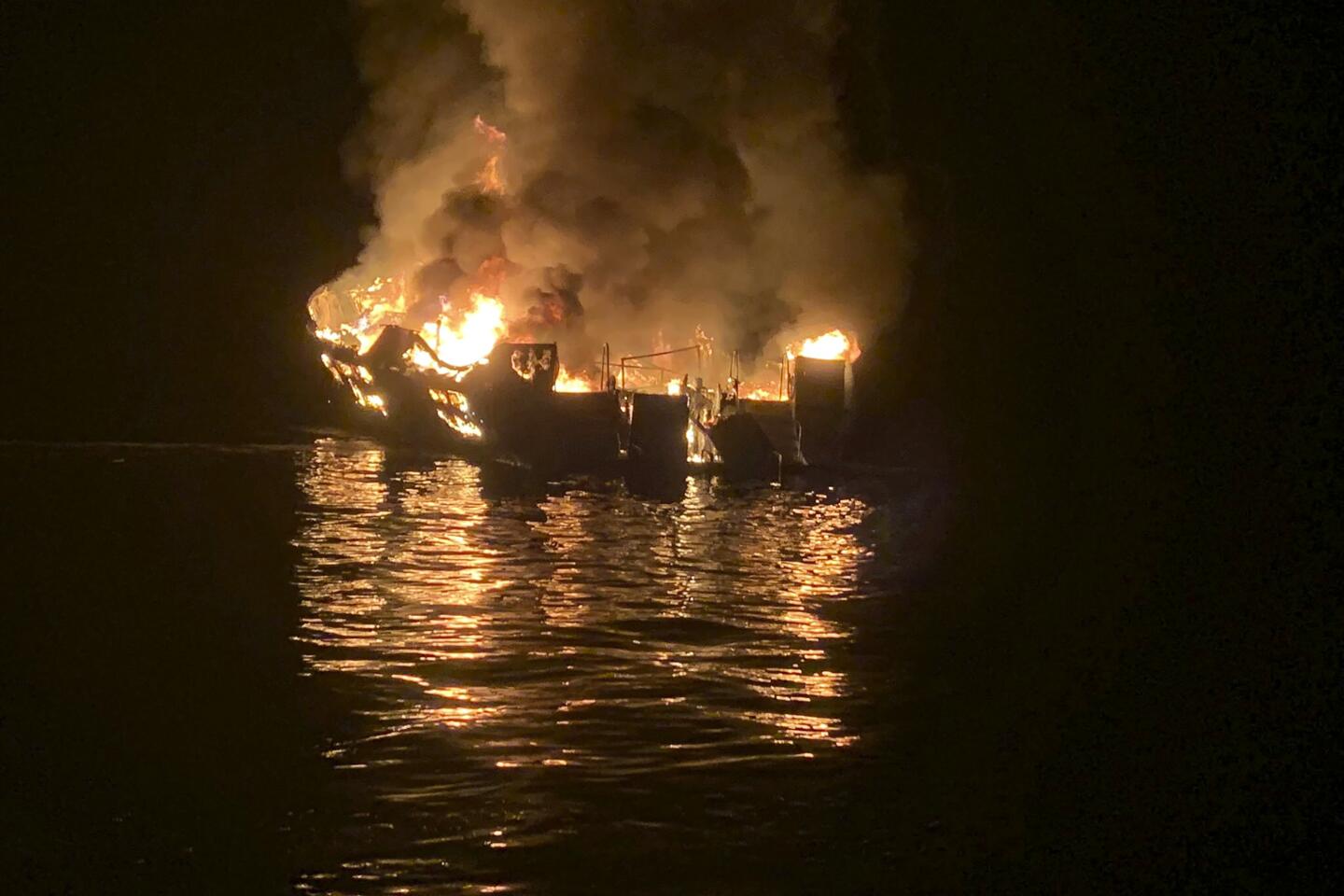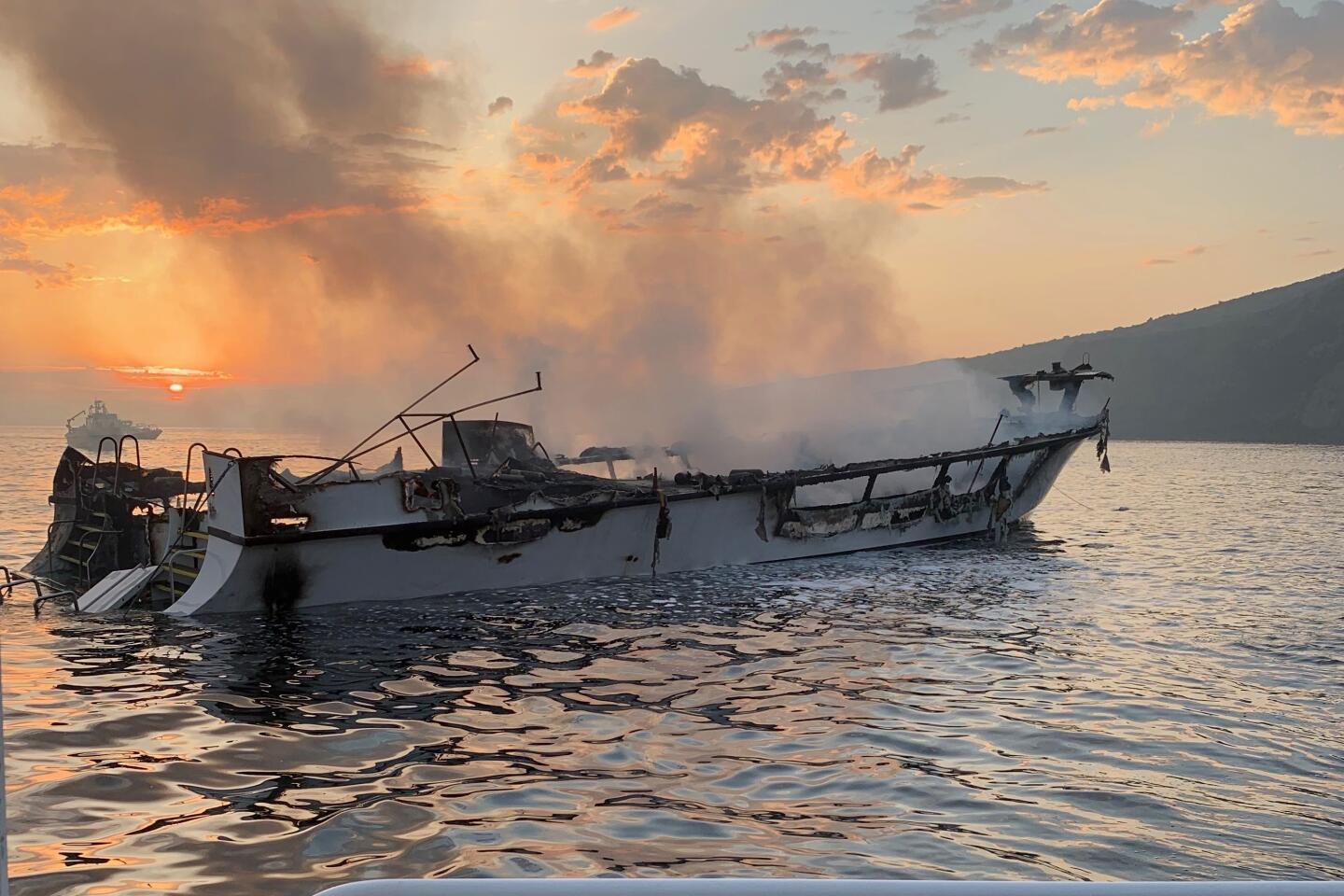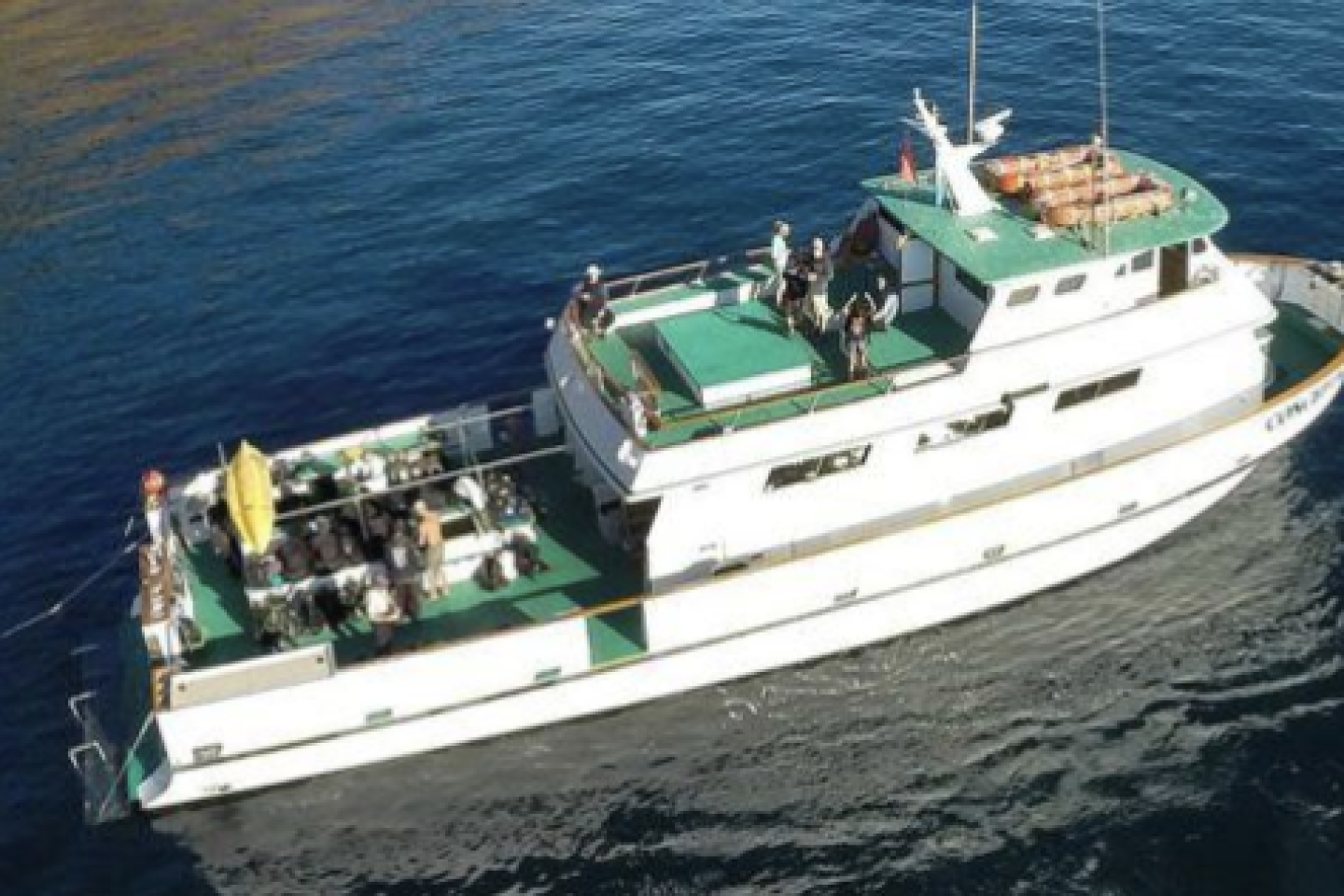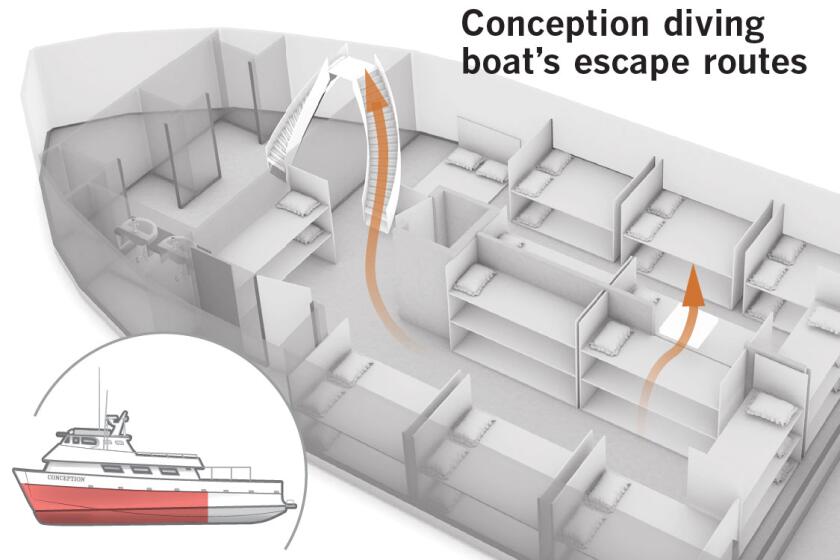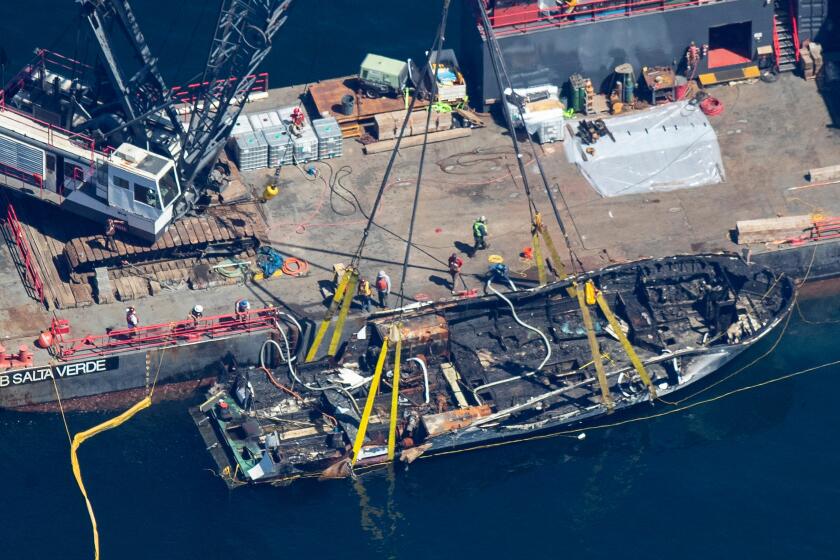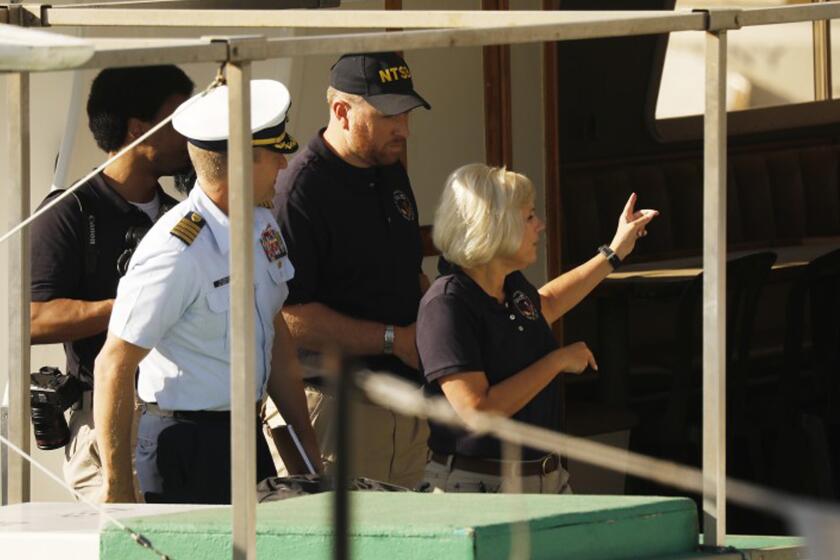Boat where 34 died was a ‘fire trap’ despite passing inspections, experts say. It’s far from alone

A day of diving off Santa Cruz Island ended like countless others aboard the Conception, with dozens of divers asleep in tightly arranged bunks that all but filled the belly of the 75-foot boat.
As always, there were two ways out in case of emergency — up a curved stairway at the front of the cabin, or through an escape hatch in the ceiling over bunks at the rear.
Before dawn on Labor Day, when flames devoured the 38-year-old wooden-hulled vessel, no one below deck made it out of either exit. The only survivors were five crew members who were up top in the wheelhouse and managed to jump into the water and then onto a dinghy.
Now, as investigators search for the cause of the fire that killed everyone in the bunk room — one crew member and all 33 passengers — questions are mounting about the design of the Conception and its emergency escape routes.
By various accounts, both the design of the boat and the layout of its sleeping quarters met federal standards and both are widely popular among California operators of overnight dive and fishing excursion vessels.
Like other such commercial boats, the Conception was subject to annual inspections by the Coast Guard, most recently in February, when it was certified to be in compliance with all regulations.
But just because it passed muster with the Coast Guard does not mean the Conception was as safe as it could be, according to some naval design and safety experts who have raised concerns about the placement of the escape routes from the bunk room.
John McDevitt, a former assistant fire chief from Pennsylvania who is an accredited marine surveyor and the chairman of a National Fire Protection Assn. committee on commercial and pleasure boat fire protection, called the Conception “a compliant fire trap.”
“What bothers me is that the vessel was inspected by a Coast Guardsman within the last 12 months,” said McDevitt, who thinks the design of emergency exits was problematic. “This boat has been checked by the Coast Guard for 40 years almost.”
The Conception was one of three “live-aboard” dive boats operated out of Santa Barbara Harbor by Truth Aquatics Inc., which has been in business since 1974 and is now owned by Glen Fritzler. He declined The Times’ requests for an interview, but has defended his crew members’ actions in trying to save the doomed passengers.
Fritzler said in a statement that he is working with National Transportation Safety Board investigators and is “committed to finding accurate answers as quickly as possible.” He also said he and his family are “utterly crushed” by the accident.
A commercial diving boat caught fire near the shoreline of Santa Cruz Island, Calif., early Monday. Many aboard the boat were believed to be sleeping below deck when the fire broke out in the pre-dawn hours.
“My family and I are speaking today with extremely heavy hearts,” he said. “No words will ease the pain that loved ones are feeling. We extend our deepest condolences to all those involved in this horrific tragedy.”
The Conception was built in Long Beach in 1981, designed by its original owner and the company’s long-retired founder, Roy Hauser, specifically for multiday dive trips.
“I designed the entire layout of the vessel,” Hauser said. “I drew it out a quarter inch to the foot and then gave it to a marine architect. They put together the final Coast Guard papers, if you will. Glen has all the plans and they are all stamped ‘approved.’ … Everything you do has to be approved by the Coast Guard.”
Hauser said Fritzler had kept the boat in “immaculate” condition and he defended its design characteristics as “absolutely” safe. He noted that many of its features are common to California dive and fishing boats, an assertion backed by others in the industry.
Ken Kurtis, a veteran California diver and instructor whose Reef Seekers Dive Co. has organized trips since 1988, said he’d been aboard the Conception many times.
The passengers of the Conception dive boat ended their second day in the waters off the California coast with a nighttime swim, exploring a lush, watery world populated with coral and kelp forests.
He described its three-level design as very similar to other such boats: sleeping quarters below deck, a main deck that includes a covered galley toward the bow with open-air dive area at the stern, and the wheelhouse with the captain’s controls at the top.
Kurtis said there was nothing extraordinary about the 75-foot boat’s combination of double- and triple-stacked bunks, or its passenger limit of 46 — the count was 13 below that capacity when the fire broke out.
“Passenger loads vary by the size of the vessel,” he said. “They had on this one 33 passengers. That’s a normal number for a dive boat. Most of the big dive boats are 30 to 35 and they are all designed pretty much the same way, with the bunks at the bottom, the galley and salon in the middle, and the wheelhouse on top.”
Chris Barry, chairman of the Society of Naval Architects and Marine Engineers’ small craft technical and research committee, agreed that the Conception’s structure and cramped sleeping quarters were not unusual.
Some California divers have dubbed the popular configuration a “cattle boat” style of excursion, because of the tight space and lack of staterooms and other cabin amenities.
In a mayday call about a boat fire near Santa Cruz Island, Calif., the caller says he can’t breathe and there’s no escape hatch for those below deck.
“The people who are on these dive boats are just crashing below,” Barry said. “These aren’t luxury staterooms. All they want to do is crash and sleep — they don’t need a lot of luxury and there’s obviously a trade-off between the amount of space per person and the cost.”
The crowded quarters might “look a little rough” but they are “absolutely legal,” he said, noting that sailors on Coast Guard cutters also sleep in three-high bunks.
“There’s nothing that unusual about the vessel,” he said.
The fact that no passengers below deck escaped has focused attention on the bunk room’s exits. The stairs in the sleeping quarters led to the galley. The escape hatch over bunks in the rear of the room opened up into a dining area adjacent to the galley and just a few feet from the open-air dive deck.
Officials have said fire blocked both exits.
Some victims’ names are released as their families and the boat operator prepare for a legal battle.
“I definitely have concerns about the ability of those passengers being able to evacuate during a fire,” NTSB board member Jennifer Homendy told The Times this week.
Homendy said she was “taken aback” by the size and location of the emergency hatch when she toured the Conception’s sister ship the Vision, which has a nearly identical design.
“You have to climb up a ladder and across the top bunk and then push a wooden door up,” she said. “It was a tight space. ... It surprised me how small it was and how difficult it was to access.”
The vessel appears to meet current federal regulations, which require boats such as the Conception to have “at least two means of escape,” including stairways and emergency hatches.
“The two required means of escape must be widely separated and, if possible, at opposite ends of the space to minimize the possibility of one incident blocking both escapes,” the regulation states, noting also that exits must be “sufficient for rapid evacuation in an emergency.”
Religious leaders and an official from the county’s Department of Behavioral Wellness spoke about the need to heal after the tragedy and how the sea can be a source of comfort.
It’s not clear if passengers ever had a chance to try to escape. Santa Barbara County Sheriff Bill Brown, who is also the coroner, said smoke inhalation is the likely cause of death.
Still, McDevitt, the marine surveyor who also is a Coast Guard-certified captain, said that the design of the boat was flawed. He questioned why both egress points — the stairwell and the hatch — deposited passengers into the galley and adjacent dining area.
“When you put two exits into the same common area, you are not providing two means of egress — it’s still only one,” he said. “You are exiting into the galley and common area.”
He said that irrespective of the minimum standards, the volume of passengers seemed to call for more exit passages.
McDevitt suggested adding “another hatch, and maybe a bigger hatch,” but noted that options would be limited on a boat of that age.
A preliminary investigation into the boat fire has suggested safety deficiencies aboard the vessel, including the lack of a “roaming night watchman” who is required to be awake and alert passengers in the event of a fire or other dangers.
“You don’t want to make a boat less seaworthy, so you can’t put hatches in the side,” he said. “If they built that boat today, they could do more. …. When you put people down there in that dungeon, it’s got to be watertight.”
Paul Kamen, a forensic naval architect and mechanical engineer based in Berkeley, said he thought the size of the roughly 2-feet-square escape hatch was adequate, but he also questioned placing both points of exit in the galley and nearby dining area.
“The common areas for fire to start are the galley or the engine room, so there’s always one [other] escape route. Whatever one is on fire, you go out the other way,” he said. “The problem here is both escape routes went through the galley, and you lost that redundancy when the galley is engulfed in flames.”
Kamen had no problem with the boat’s passenger capacity, agreeing that many divers “would think it’s cool to be stuffed in an environment like that — it’s a connection with the traditions of the sea to be in a triple-high bunk bed with 30 other people.”
He said he is more intrigued by the fire’s rapid growth.
“The big mystery is why the fire propagated so far and so fast,” Kamen said. “I don’t think the fact that wood furnishings in the passenger cabin really explain it.”
More to Read
Sign up for Essential California
The most important California stories and recommendations in your inbox every morning.
You may occasionally receive promotional content from the Los Angeles Times.

